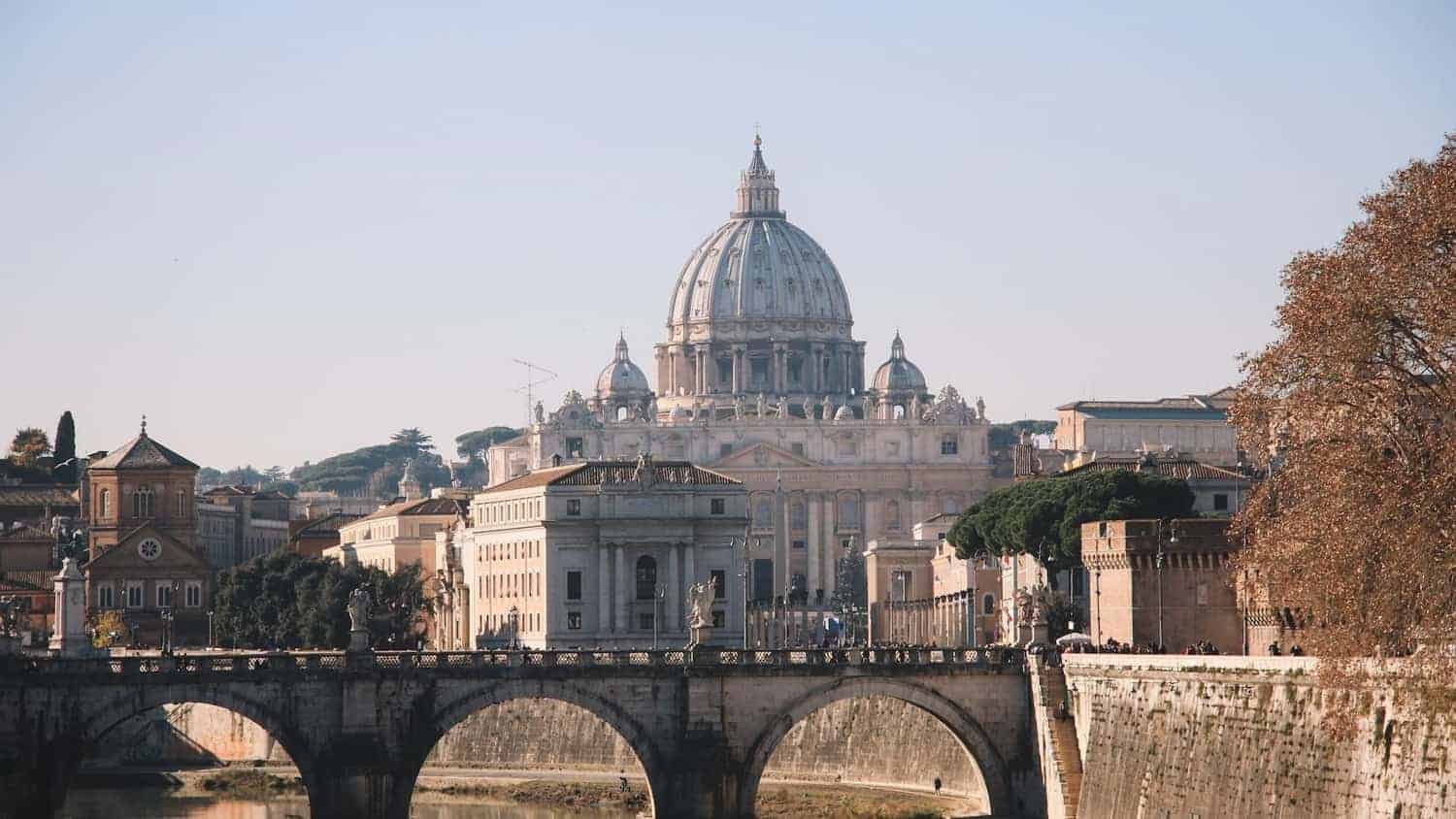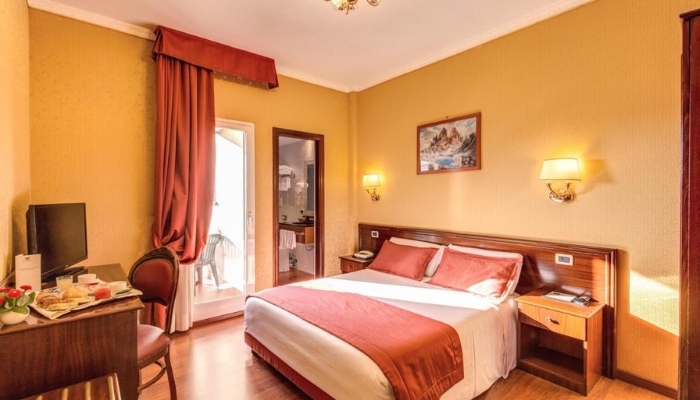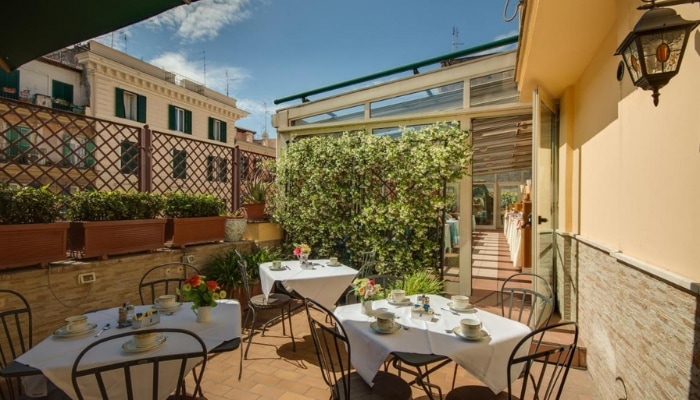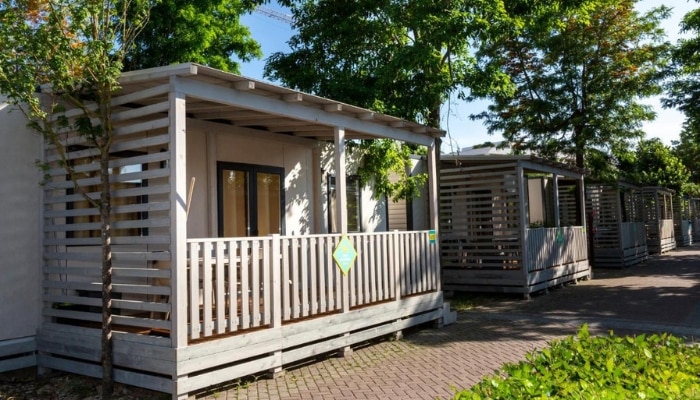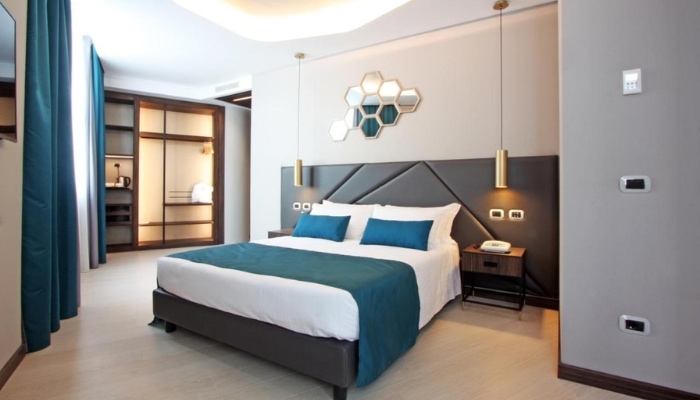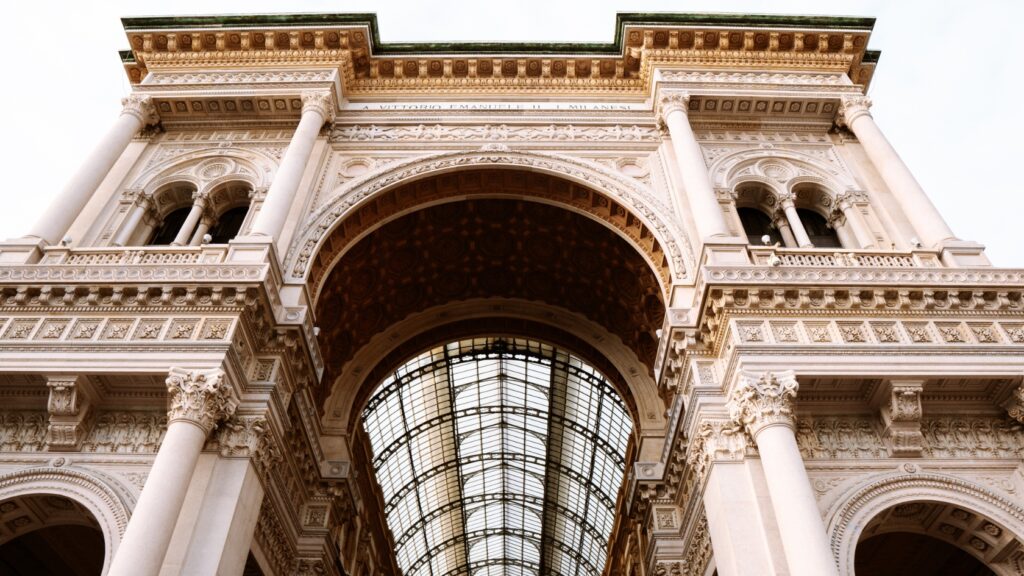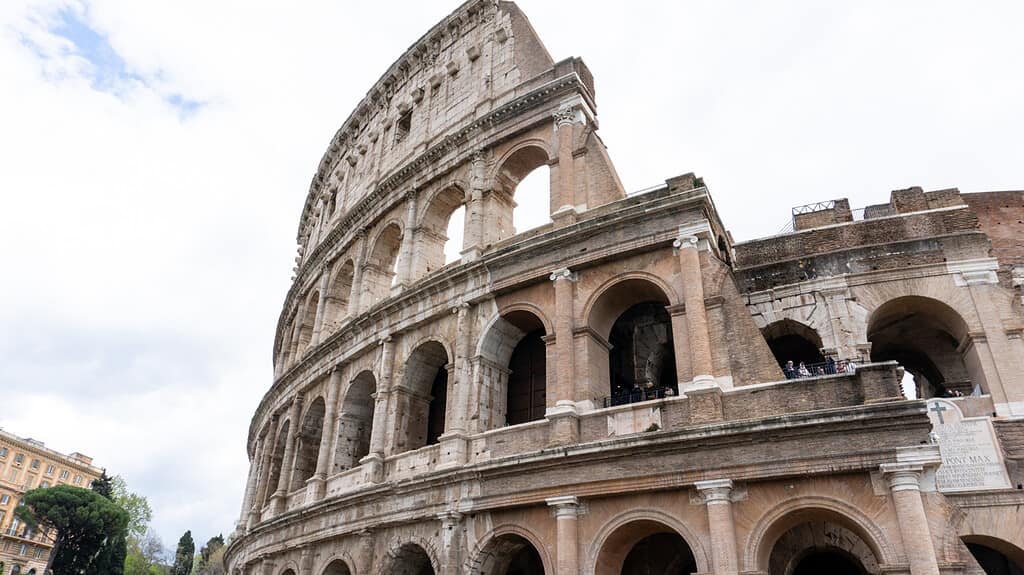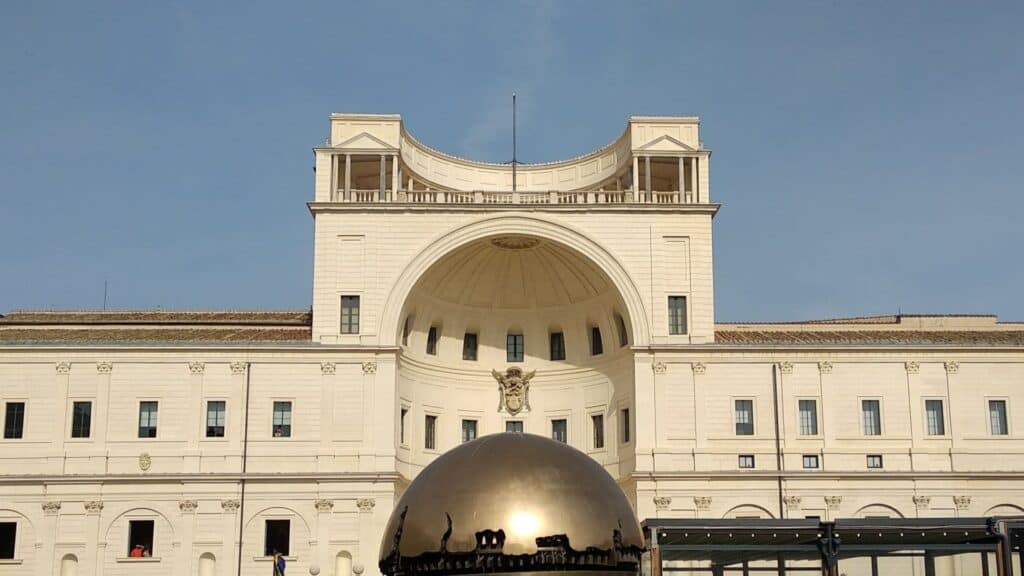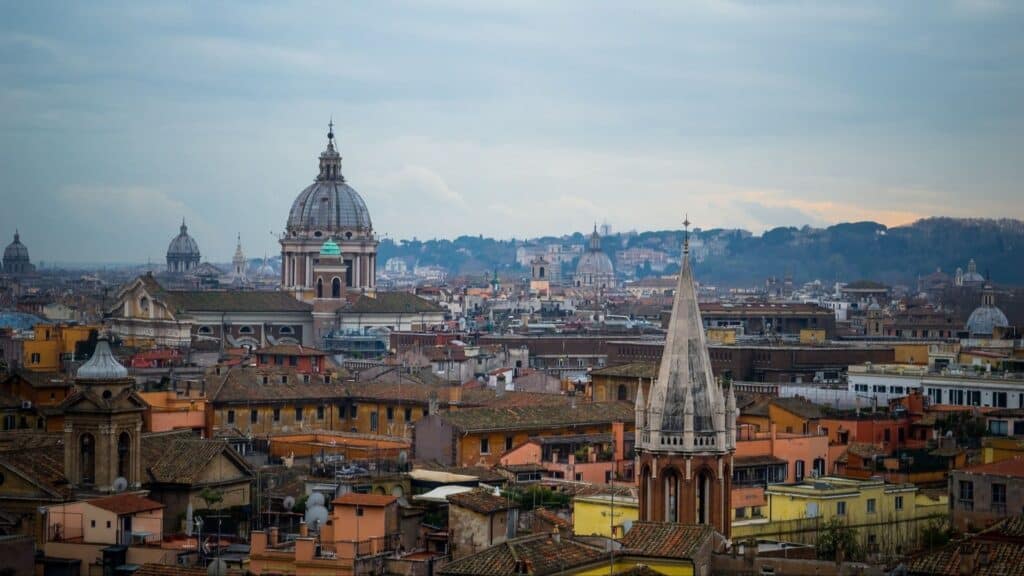Planning what are the best things to do in Rome? Check out our 35 tips for the best places to visit in Rome (Colosseum, Trevi Fountain, Pantheon, Vatican and many more).
We will show you the known and unknown places in Rome if you would like to see more of Rome.
You’ll also find other useful information in the article, such as entrance fees, opening times and how to get to the monuments, so you can plan your Rome itinerary quickly and easily. You’ll also learn where to stay, where to eat, and how to use the toilets in Rome.
We update admission fees, opening times and other useful information for sights in Rome several times a year. The latest update is always listed at the beginning of the article.
- Rome
- When to visit Rome?
- The best places to see in Rome: MAP
- Best Things to do in Rome: Top Places to visit and see
- Colosseum (Colosseo)
- What to do if tickets to the Colosseum are sold out?
- Forum Romanum
- Palatino hill (Colle Palatino)
- Arch of Constantine (Arco di Costantino)
- Piazza Venezia
- Trevi Fountain
- Spanish Steps (Scalinata di Trinità dei Monti)
- St. Peter's Basilica in Vatican City (Basilica di San Pietro)
- Sistine Chapel (Cappella Sistina)
- Vatican Museums (Musei Vaticani)
- Castle of the Angels (Castel Sant'Angelo)
- Pantheon
- Piazza Navona
- Capitoline Museums (Musei Capitolini)
- Basilica of Santa Maria in Aracoeli (Basilica di Santa Maria in Ara coeli)
- Basilica of Our Lady of the Snows (Basilica Papale di Santa Maria Maggiore)
- Lateran Basilica (Basilica di San Giovanni in Laterano)
- Basilica Papale San Paolo fuori le Mura
- National Roman Museum (Museo Nazionale Romano)
- Borghese Gallery (Galleria Borghese)
- Villa Borghese
- Piazza del Popolo
- Baths od Caracalla (Terme di Caracalla)
- Circus Maximus
- The Mouth of Truth (Bocca della Verità)
- Trajan's Forum (Mercati di Traiano)
- Aventine
- Catacombs of Rome (catacombe di Roma)
- Gianicolo hill
- How to save money on sightseeing and transport in Rome?
- Ticket Reservation
- Where to stay in Rome?
- Where to eat in Rome?
- Tips before visiting Rome
- More about Rome
- FAQ – What to see in Rome
Rome
Rome is a beautiful city, full of history, and you’ll find it on almost every corner. Rome is also noisy, crowded and often quite dirty.
Still, you’ll probably forgive its worse side during your visit once you’ve walked around Piazza Navona, seen the Pantheon for yourself or had a delicious Italian gelato.
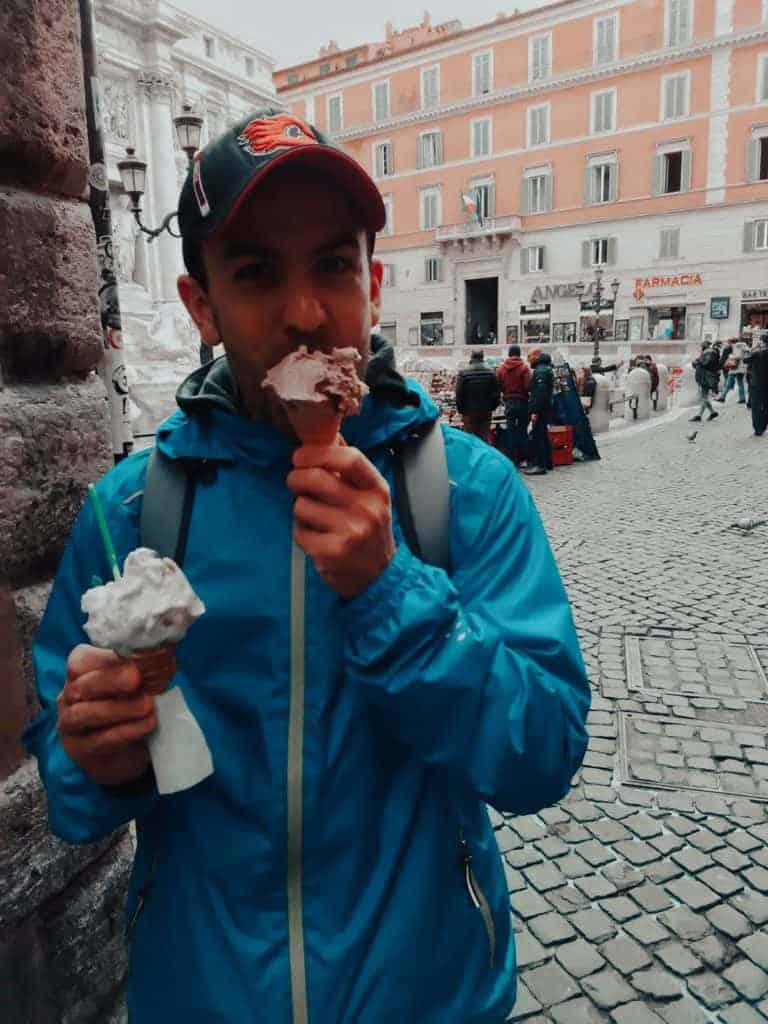
You may have heard of the Eternal City. This is a term first used in connection with Rome by the poet Tibulus in the 1st century BC.
The city is also known as Caput Mundi, translated as the capital of the world. It earned its nickname due to its central location in antiquity, when the Roman Empire ruled most of the known world.
Rome was the first city in the world to reach the 1 million mark. As early as 133 BC. Just to give you an idea – Paris only managed to do this in 1850.
HOW TO GET FROM THE FIUMICINO AIRPORT TO THE CITY CENTRE: Private transfer from the airport is the most convenient way to get to Rome. Buses are the most popular mode of transfer – there are several carriers to choose from, with buses being the most reliable SIT Bus-Shuttle. They stop near the Vatican and Termini Station. Just show your ticket on your mobile phone on the spot. The advantage is that if you miss the original connection, you can take the next one without any problems. The third and fastest option is Leonardo Express trains.
When to visit Rome?
Rome is one of the most visited places in the world. Everyone wants to see the imposing Colosseum and the art-filled Vatican Museums.
In Europe, it is the second most visited city after Paris. But Paris has wide boulevards where the number of tourists is diluted.
The narrow streets of Rome are often crowded in high season, and you can almost stand still in the Sistine Chapel. The best time to visit is late autumn to early spring.
The best places to see in Rome: MAP
HOW TO USE THIS MAP: Above you will find a detailed map with tips on the most beautiful places to visit in Rome. Click at the top left of the map to see separate layers with highlighted locations. You can hide and show the different layers or click on the icons on the map to see the names of the places I mention in my guide to Rome. If you want to save the map, mark it with an star. It will then be saved to your Google Maps and can be retrieved at any time on your mobile phone or computer. For a larger version of the map, click on the icon in the top right corner.
Best Things to do in Rome: Top Places to visit and see
Rome is full of monuments, historical sites and museums. It takes a lot of time, a lot of energy, and sometimes a lot of nerves to go through all of them while waiting in queues for tickets.
But today we’ll show you all the information you need about admission fees, opening times and practical tips on how to avoid queues at the monuments.
Colosseum (Colosseo)
The Colosseum is a symbol of Rome with almost 2000 years of history. It is also one of the 7 New Wonders of the World and is listed in the Guinness Book of World Records as the largest amphitheatre in the world.
It is visited by more than 6 million people every year and is one of the most visited monuments in the world.
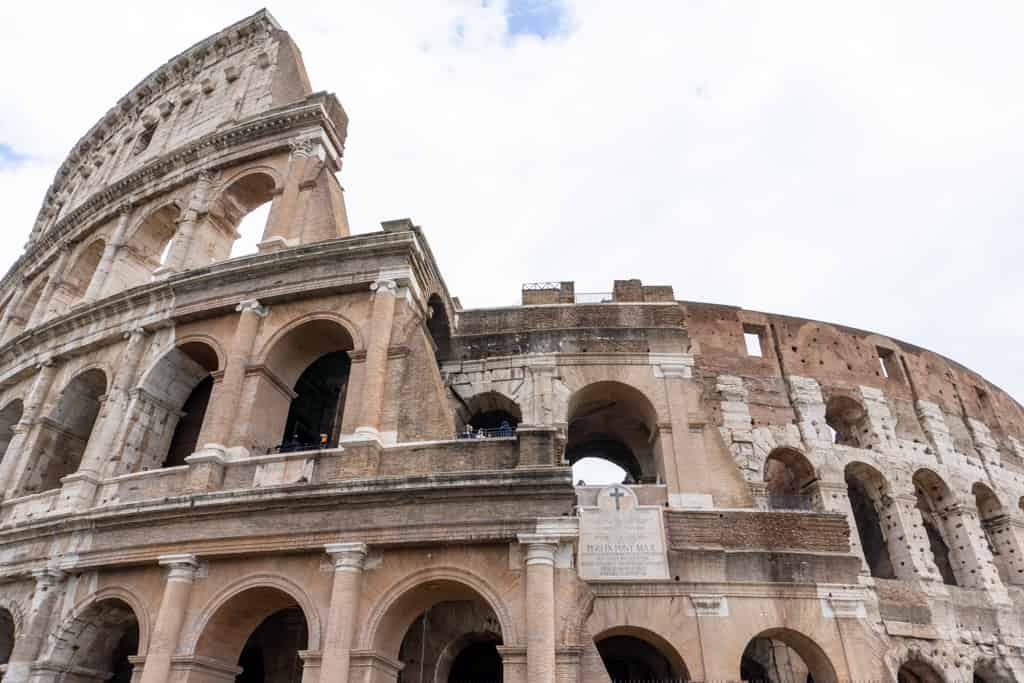
You know that feeling when you have high expectations for something and then you are disappointed live? The Colosseum is one of the sights in Rome that will live up to your expectations. At least for us, that was certainly true.
Take a look at the Colosseum on an evening stroll. It’s beautiful. Plus, there are far fewer people here. You’ll have a great view of the Colosseum from the Parco del Colle Oppio, where there are other ancient remains including Nero’s House.
TIP: It’s best to book tickets to the Colosseum in advance if you want to make sure you get in. Book well in advance, they tend to sell out weeks in advance. Guided tours are also available, with which you can learn lots of interesting and fun facts.
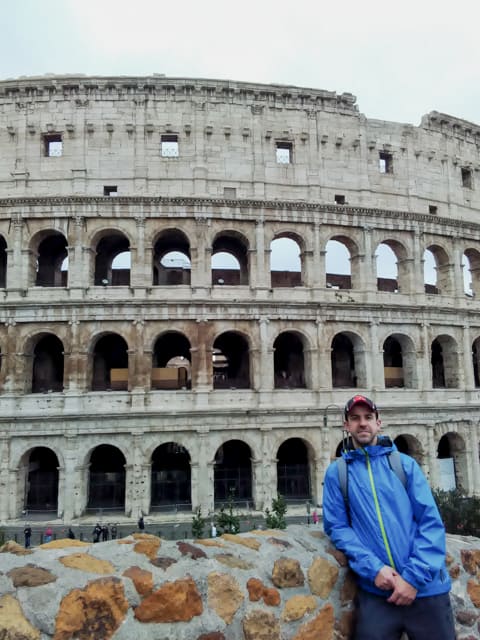
The Colosseum is also known as the Flavian Amphitheatre. For more than 500 years, it was the centre of entertainment for the Roman people – exotic animal exhibitions, prisoner executions, gladiator fights took place here.
There is a sad statistic associated with this – according to experts, 400,000 people and over 1 million wild animals died in the Colosseum. Interestingly, the blood of gladiators symbolized strength and health in ancient times, so it was prescribed as a cure for fertility or epilepsy.
More information about the Colosseum can be found in a separate article about the Colosseum.
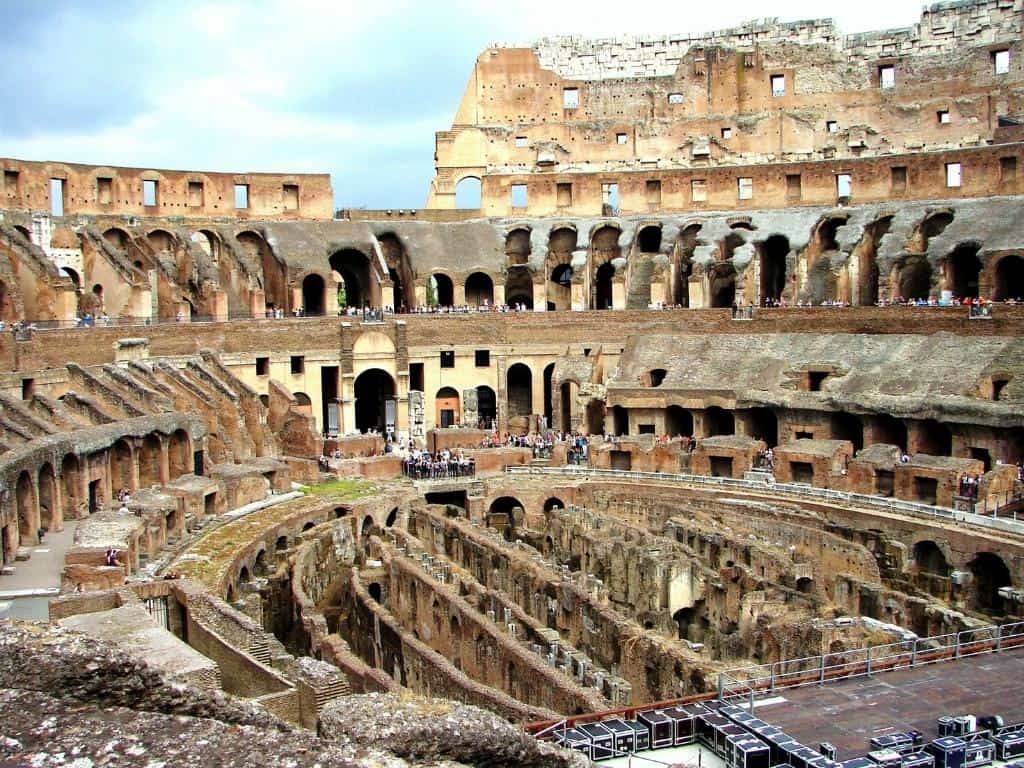
Where is the Colosseum: Piazza del Colosseo
How to get to the Colosseum: Metro – line B → stop Colosseo – you will see the Colosseum as soon as you get off the metro station; bus – lines 75, 81, 175, 204, 673, tram – line 3
What are the opening hours of the Colosseum:
- 2 January – 28 February 9:00-15:30
- 1 March – 25 March 9:00-17:30
- 26 March – 31 August 9:00-19:15
- 1 September – 30 September 9:00-19:00
- 1 October – 28 October 9:00-18:30
- 29 October – 31 December 9:00-16:30
- You will be let in for the last time 1 hour before closing time. Closed 1 January and 25 December
How much is the entrance fee to the Colosseum?
- Full admission 16 €
- Reduced entrance fee 2 € (EU citizens 18-25 years of age included)
- Advance booking is recommended (€2 booking fee) – limited number of tickets available and queues form
- The ticket is combined, i.e. you can visit the Colosseum, the Forum Romanum and the Palatine Hill (both just opposite the Colosseum)
- Free admission for everyone on the first Sunday of the month – no advance reservations possible
- Part of the Roma Pass: yes (more information on where to book with the Roma Pass here)
Please note: Children under 18 years of age and disabled persons with an accompanying person are admitted free of charge and can collect their tickets at the ticket offices in the Colosseum or Forum Romanum.
You have 24 hours to explore the sights (only 1 entry per sights). All locations are immediately adjacent to each other. You have to book a specific time slot for the Colosseum, and you can visit the Forum Romanum and Palatine Hill before or after.
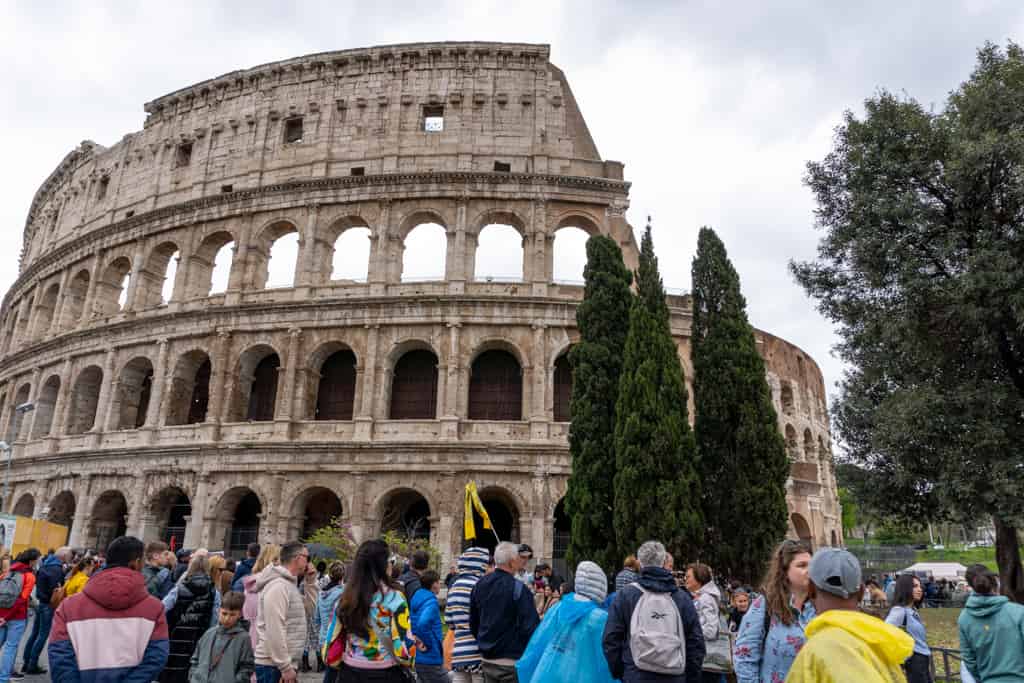
What to do if tickets to the Colosseum are sold out?
A common thing in Rome – tickets for the Colosseum and other places can sell out weeks in advance. Check current availability here .
If there are no available dates, you can try your luck on site (a limited number of tickets are available) or another option is a guided tour. An increasingly popular option to visit the Colosseum, as the guide will help you get your bearings quickly. Here you will find all the options to visit the Colosseum.
Forum Romanum
The Forum Romanum, together with the Colosseum, is the greatest reminder of the Roman era. In ancient Rome, religious and public life took place here. Interestingly, the area was originally a swamp.
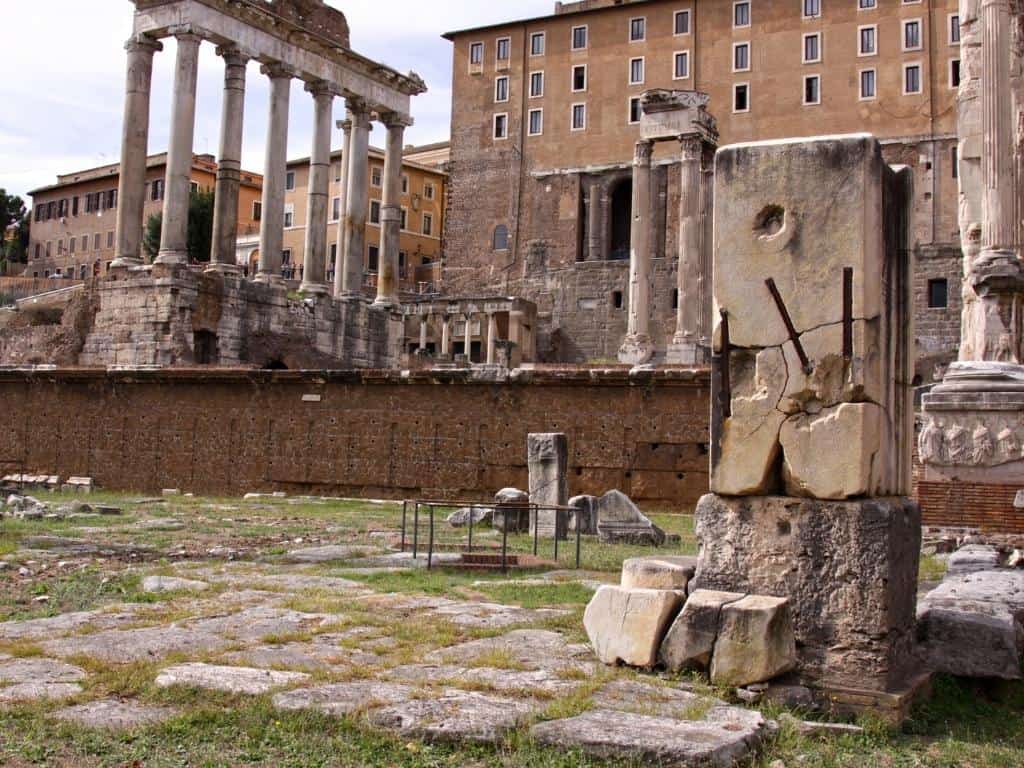
The Forum Romanum is located between the Palatine Hill and the Colosseum. If you walk towards the Piazza Venezia (which is where most visitors go), you will have a view of the Forum Romanum from above. However, this is not equal to the tour among the ruins themselves, which is part of the ticket to the Colosseum.
Although many of the buildings in Rome have been preserved in excellent condition to this day, they still represent only 10% of the excavations.
The original Rome is located deep underground. There are two reasons for this. In the past, the Tiber River often overflowed and dumped a lot of dirt on the city.
The second reason is the new construction, when the roofs of the original houses were torn off, the houses were covered with earth and then the Romans built new buildings on top of them.
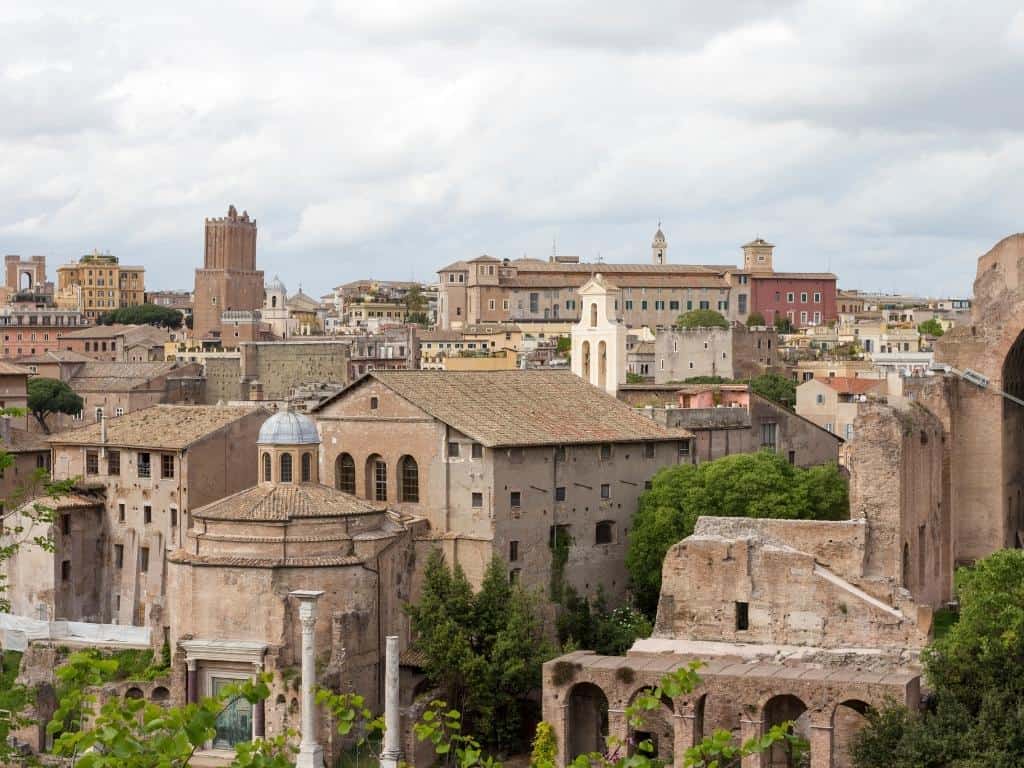
The Forum Romanum is included in the combined ticket together with the Colosseum and the Palatine Hill – see information for the Colosseum. Unlike the Colosseum, you don’t have to have a specific time booked for the Forum Romanum.
- What are the opening hours of the Forum Romanum: Times vary according to the season – see Colosseum. You will be let in for the last time 1 hour in advance. Closed 1 January and 25 December.
- Part of the Roma Pass: yes
TIP: Tickets to the Colosseum, Forum Romanum and Palatine Hill it’s best to book in advance if you want to make sure you get in. Book well in advance, they tend to sell out weeks in advance. Guided tours are also available, with which you can learn lots of interesting and fun facts.
Palatino hill (Colle Palatino)
This is where it all began. On Palatine Hill, he founded in 753 BC. n. l. Romulus Rome.
Palatine’s hill was a symbol of power and wealth. Wealthy Romans built their houses here, which were later replaced by imperial palaces. And the word palace comes from the word palatine.
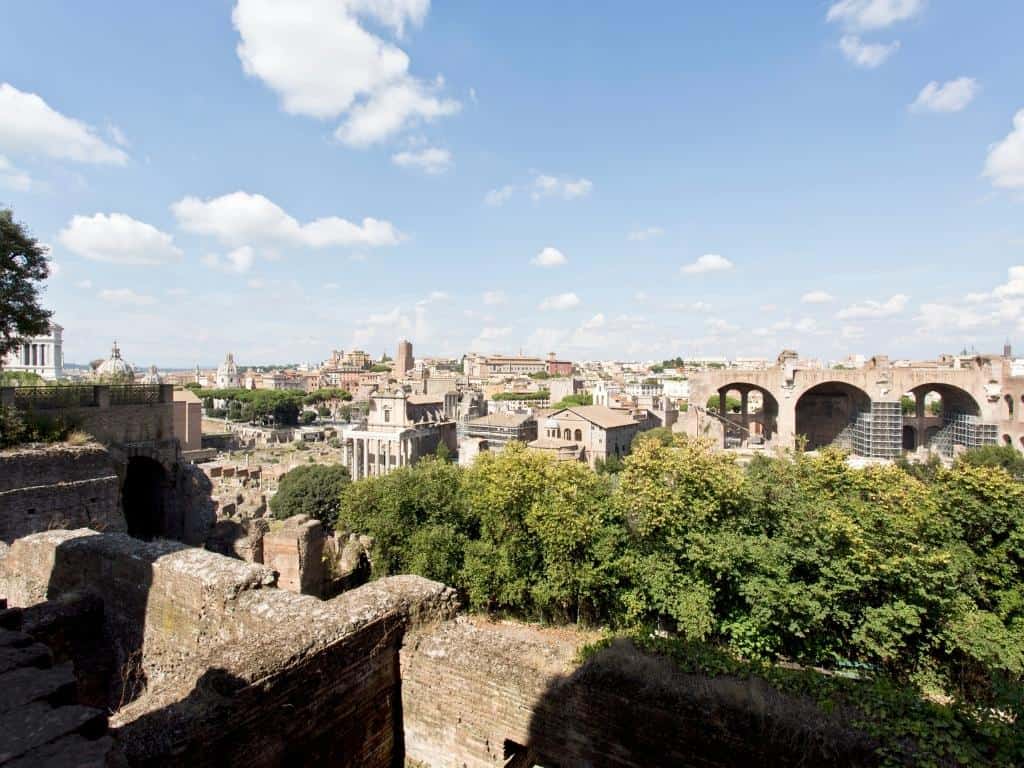
The Palatine Hill forms a single area together with the Forum Romanum, which has a common entrance. It’s about 40 metres above the Forum Romanum, giving you a great view of the Forum Romanum, the Colosseum and the Circus Maximus beyond.
Palatine Hill is included in the combined ticket with the Colosseum and Forum Romanum – see Colosseum for more information.
- What are the opening hours? The time varies according to the season – see Colosseum. You will be let in for the last time 1 hour in advance. Closed 1 January and 25 December.
- Part of the Roma Pass: yes
Arch of Constantine (Arco di Costantino)
The Arch of Constantine is not to be missed – it is located between the Colosseum and the Palatine Hill. It was built in 315 to commemorate the victory of Constantine I the Great at the Battle of Milvian Bridge.
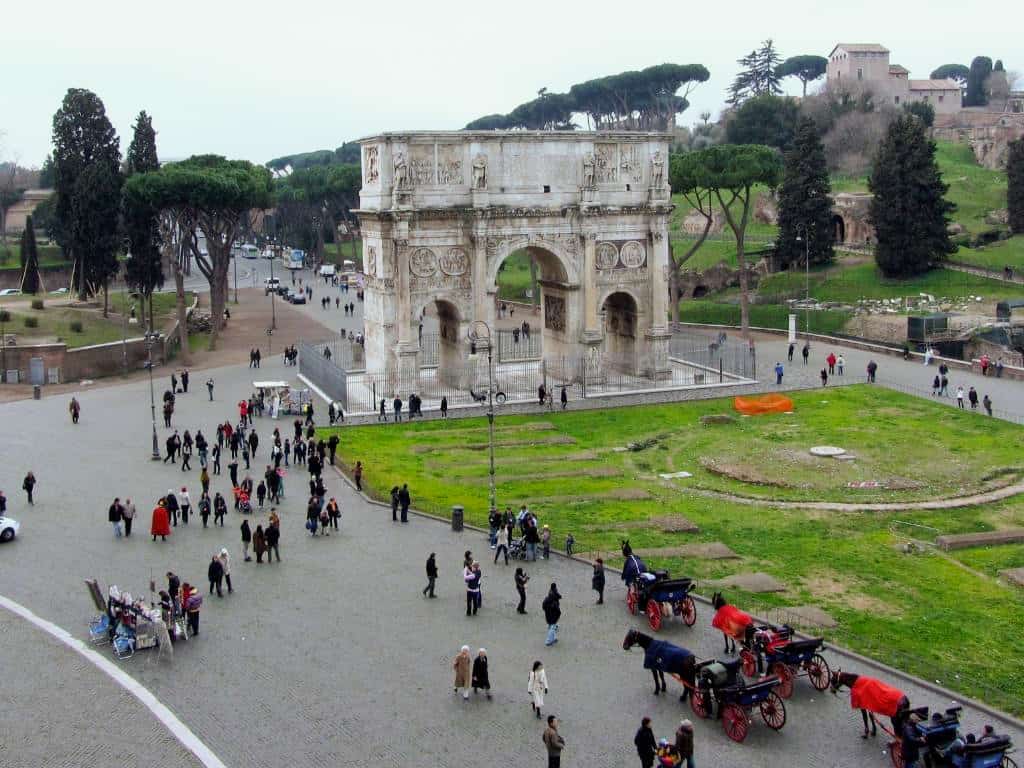
More information about the monuments of ancient Rome can be found in a separate article.
Piazza Venezia
Piazza Venezia is a lively square in the heart of Rome, just a short walk from the Colosseum. On the piazza you will see the Palazzo Venezia (the brick building in the photo below), which was once Mussolini’s residence and where he declared war in 1940. Today it houses an art museum.
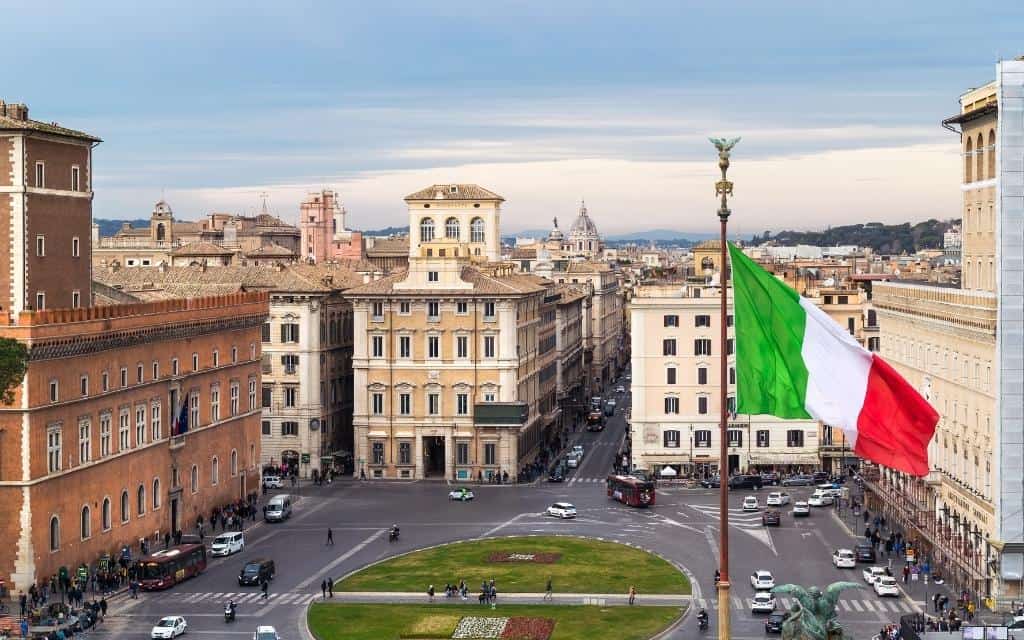
The square is dominated by the imposing Complessso Vittoriano, built in the late 1890s as a tribute to Victor Emmanuel II, the first king of unified Italy.
The Romans infamously nicknamed the building the Whipped Cream Cake or the Typewriter. In the middle stand 2 soldiers guarding the tomb of the unknown soldier, thus guarding the two eternal flames.
You can go up to the terrace and see the surrounding area – the Colosseum, the Roman Forum and Piazza Venezia – for a fee.
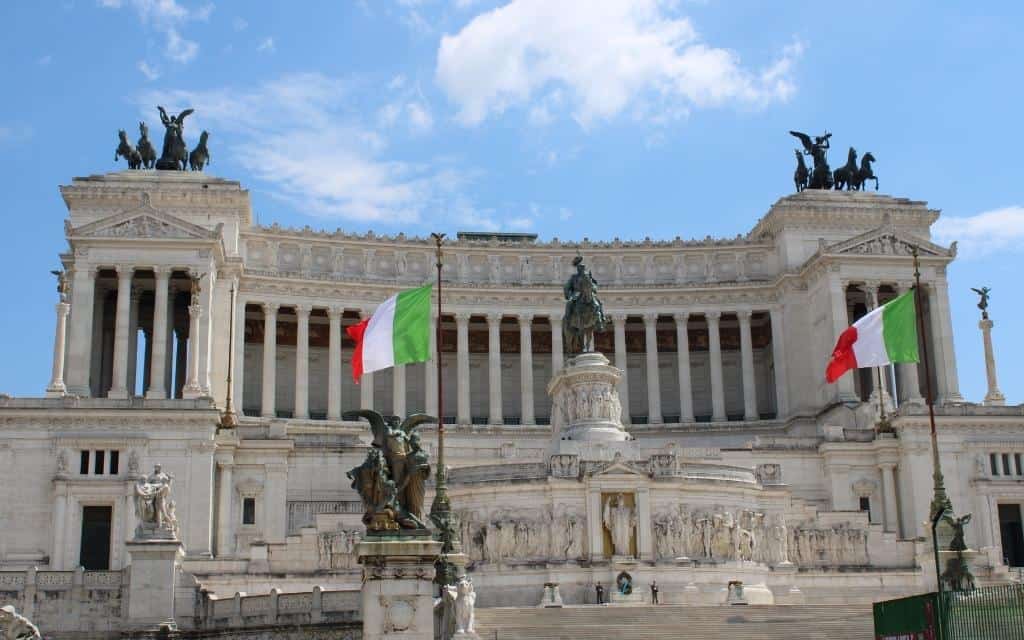
Trevi Fountain
The Trevi Fountain is considered by many to be the most beautiful fountain in the world.
And why the Trevi Fountain? Three streets meet in the square.
The square is tiny. Most of it is taken up by the fountain itself, which is set in the Palazzo Poli. This gives it an even greater impression of monumentality. You have the feeling that you are standing on a theatre stage watching an amazing performance.
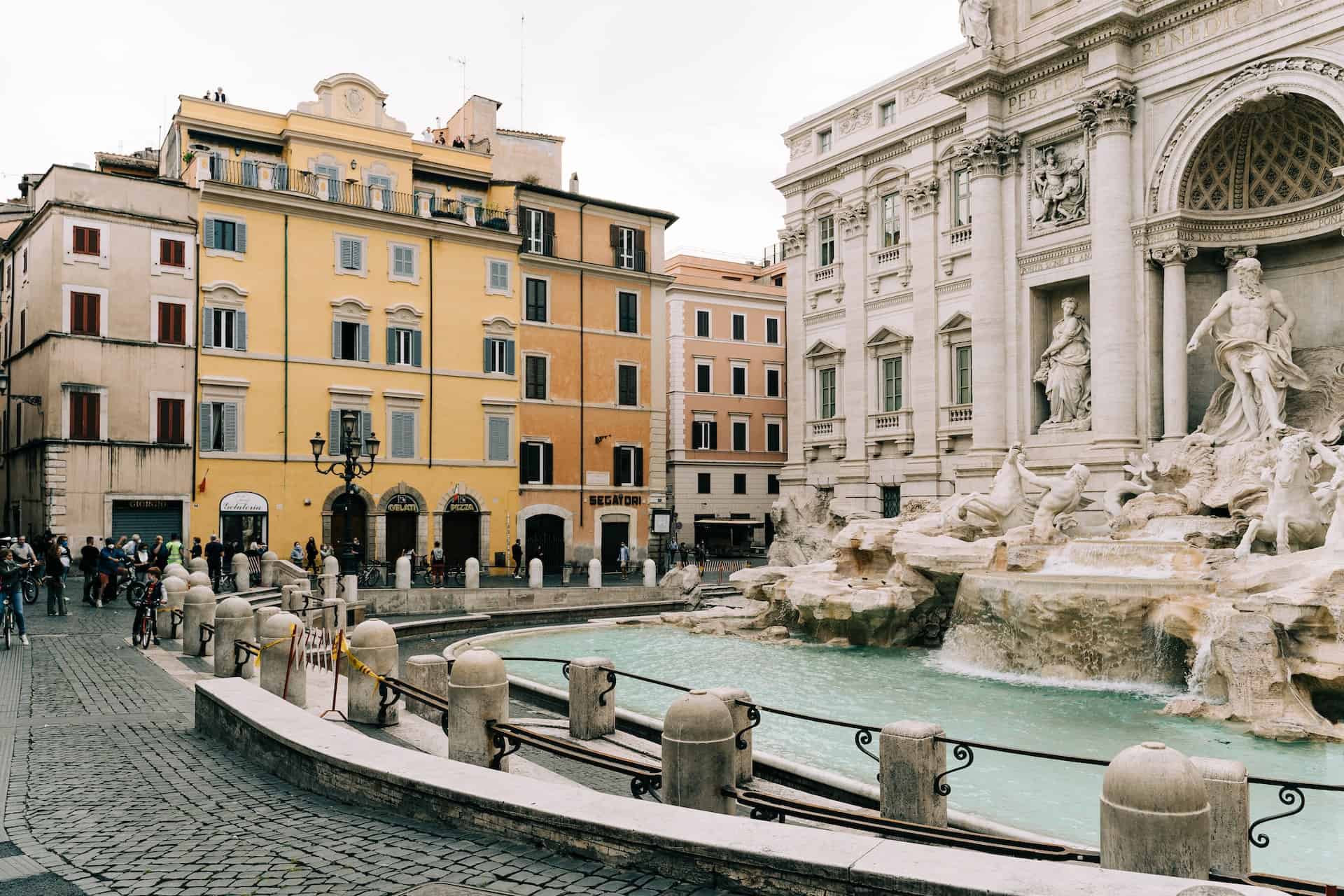
The Trevi Fountain symbolises abundance and health and is the most famous fountain created by the Italian architect Lorenzo Bernini (others can be found, for example, under the Spanish Steps).
Tradition says that if you throw a coin into the Trevi Fountain, you will return to Rome one day. If you toss 2 coins there, you will meet love and 3 coins will bring marriage. It is said that it fits into the fountain for € 3,000 a day. Up to € 1.4 million per year. So maybe you’ll get hit in the head with a coin like we did :).
Money is collected 3 times a week when the Trevi Fountain is closed to the public – MON, WED, FR between 8 and 9 am. Everything then goes to a local charity to help the homeless and needy.
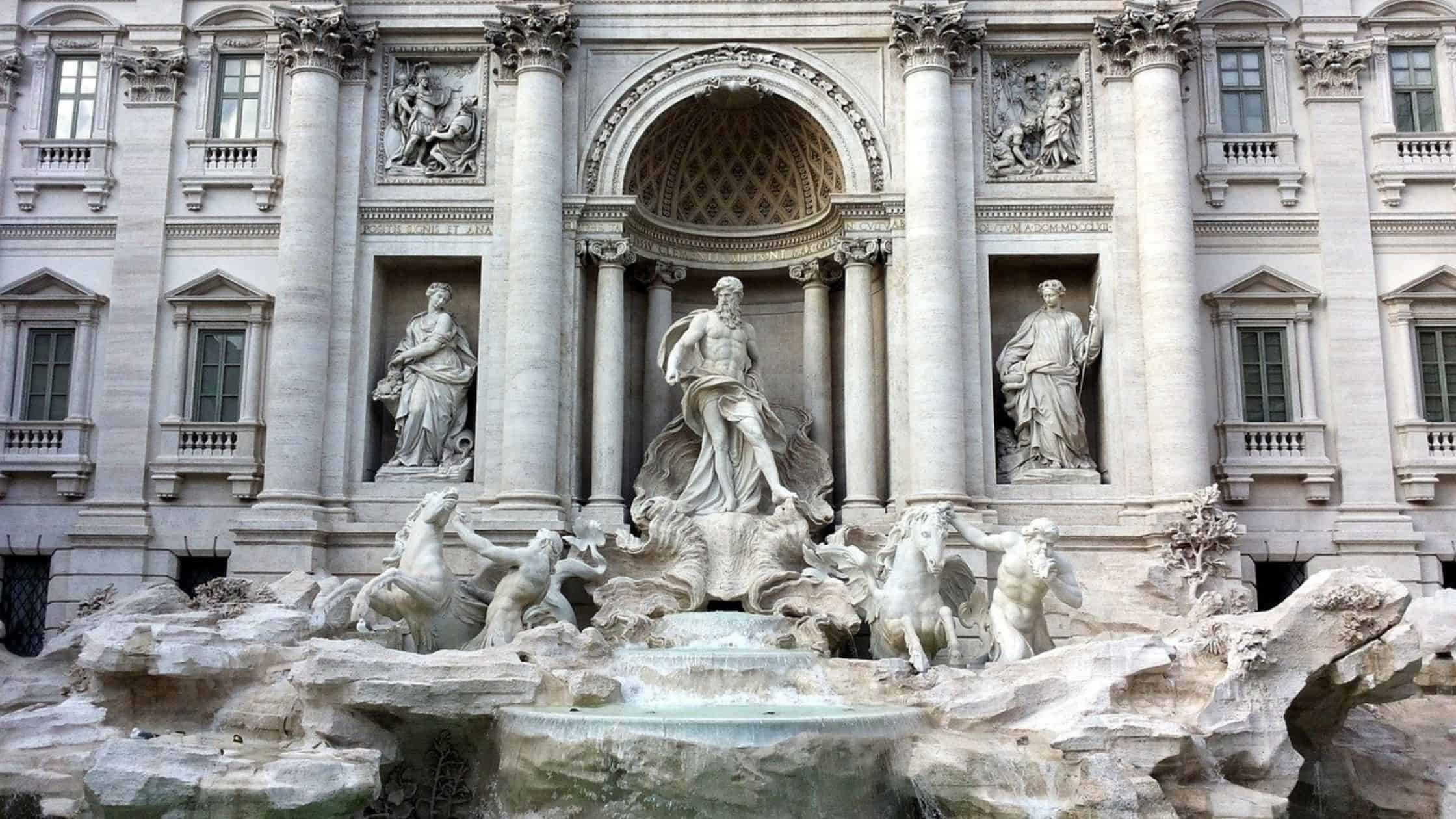
TIP: The Trevi Fountain is one of the most popular sights in Rome, along with the Vatican and the Colosseum. Literally crowds of tourists squeeze into the local square almost all year round. Even late at night. But if you land, you can enjoy the fountain with just a few others.
- Where the Trevi Fountain is: Piazza di Trevi
- Getting to the Trevi Fountain: Metro – line A → stop Barberini
- What are the opening hours and entrance fees of the Trevi Fountain: The fountain is open all year round free of charge
Spanish Steps (Scalinata di Trinità dei Monti)
The Spanish Steps are just 10 minutes from the Trevi Fountain. They are the most famous staircase in Rome and the widest staircase in Europe.
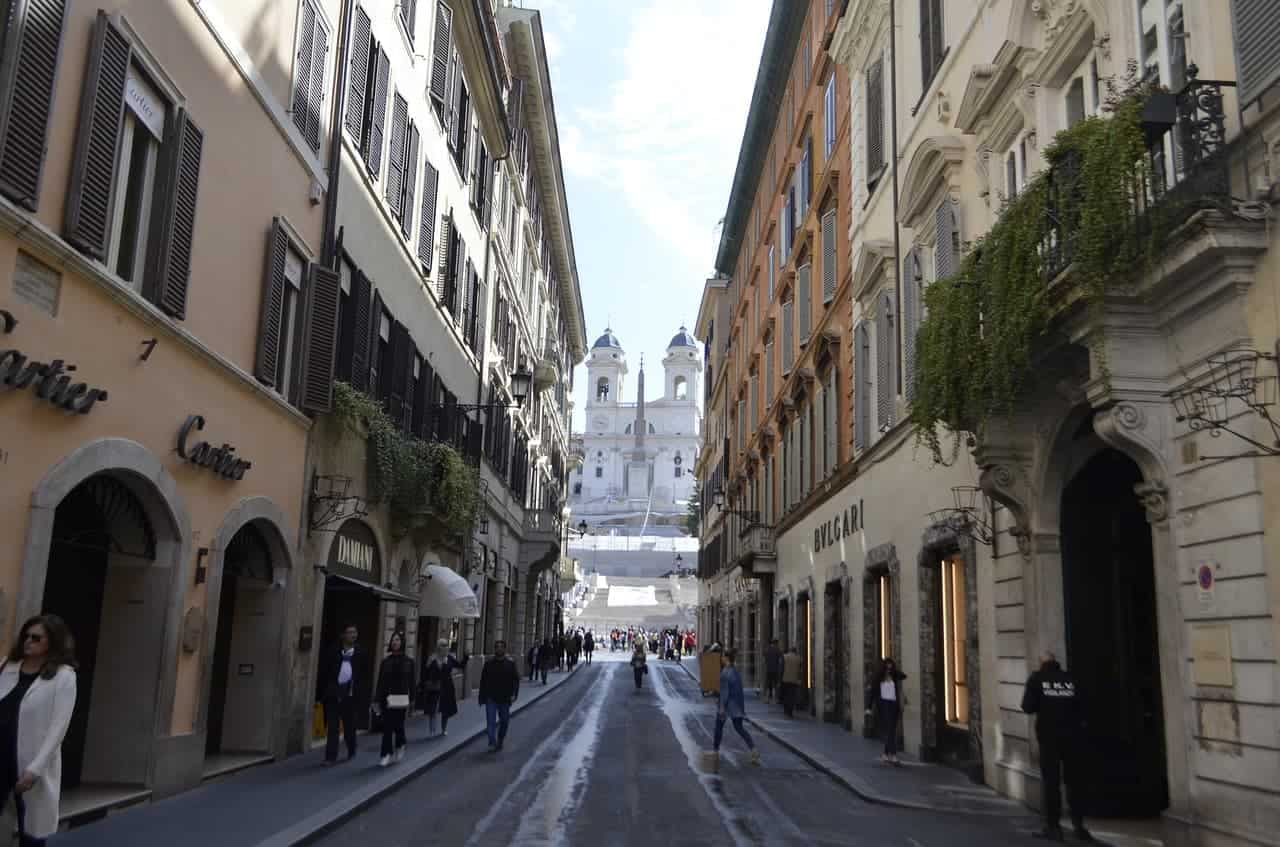
The Spanish Steps have an irregular butterfly shape and date from the 18th century. At the top is the Trinità dei Monti church and at the foot of the steps is Bernini’s Barcaccia fountain.
The Spanish Steps were built for one purpose – to connect the local church with the square below. They take their name from the Spanish Embassy, which was located here from the 16th century. century.
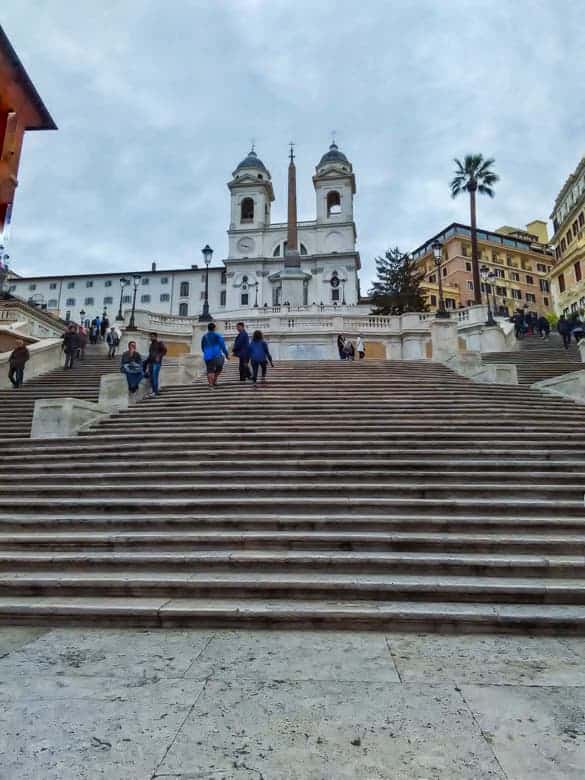
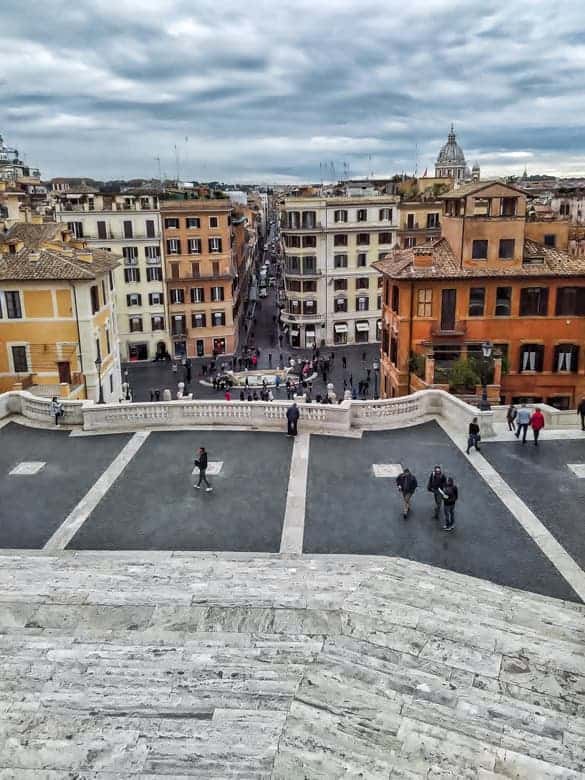
Note: It is forbidden to sit on the Spanish Steps. In the past, everyone used to sit here and in season you had a problem to pass. The city responded by banning sitting, drinking and eating to preserve the monument.
St. Peter’s Basilica in Vatican City (Basilica di San Pietro)
St. Peter’s Basilica is an important pilgrimage site and one of the holiest and largest churches of the Catholic Church. It is the place where the Pope presides over many liturgies throughout the year.
The basilica stands on the site of the original church directly above the tomb of St. Peter. It took more than 120 years to build.
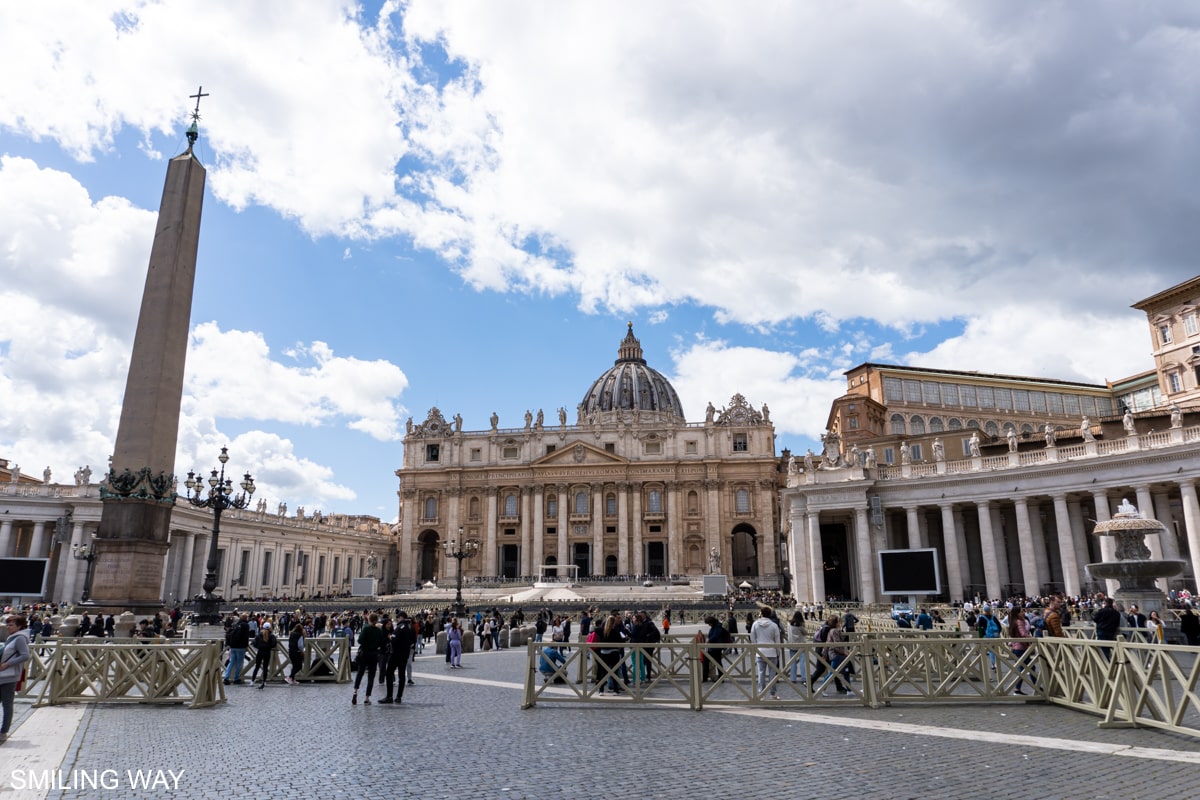
Basilica of St. St. Peter’s is considered the largest church in the world due to its size, which can accommodate up to 60,000 worshippers. You can climb up to the dome and enjoy a magnificent view of St Peter’s Square, another work of Bernini. Even when you go up, you can see the beautiful mosaics that line the dome up close.
On the first level is the entrance to the roof, where you can see the statues of the apostles up close. From the first level, you will climb up narrow stairs to the dome.
Piazza San Pietro was the first place where the Romans used paving stones. That is why the paving stones in Rome are called Sanpietrini.
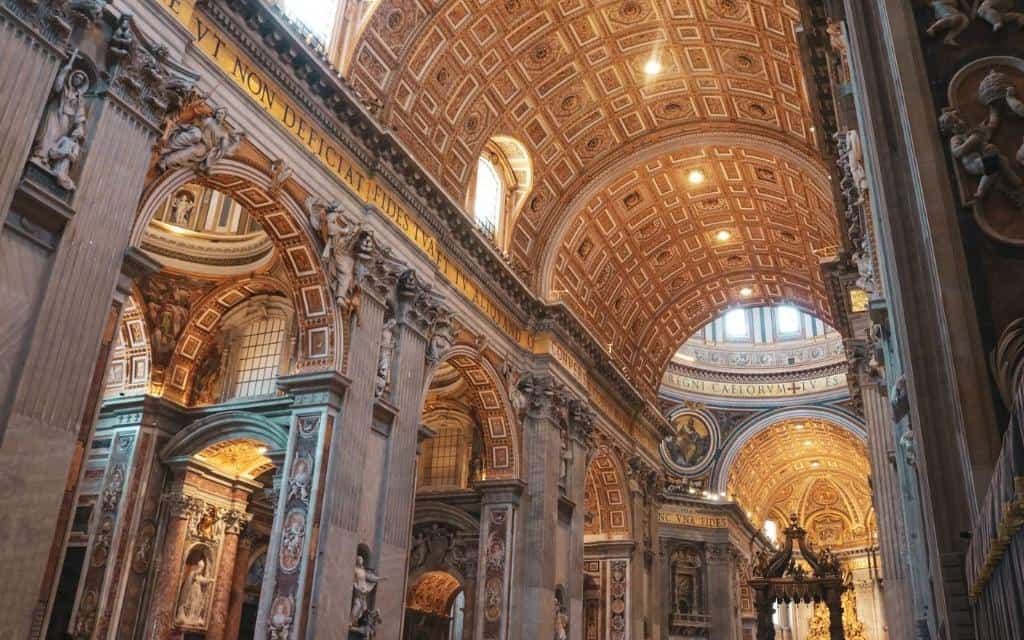
Although St Peter’s Basilica is the most visited church in Rome and the Vatican, it is not the most important church building. The Lateran Basilica is the official seat of the Pope and is thus the only cathedral in Rome (more about the Lateran Basilica in a moment).
Admission to St Peter’s Basilica is free. In addition, you can buy audio guide for 5 € (available in English, German, Spanish, Italian, French, Chinese, Japanese, Polish, Portuguese and Russian).
Piazza San Pietro, Vatican
How to get to St. Peter’s Basilica: Metro – line A → Ottaviano stop and from there about 15 minutes on foot along the Vatican walls
What are the opening hours of St Peter’s Basilica:
- April-September 7:00-19:00
- October-March 7:00-18:30
- Please note: On Wednesdays the Pope has an audience and the Basilica does not open until 12:30-13:00. If you are planning to see the Pope, book your place here.
- The dome opens between 7:30-8:00 and closes from April to September at 18:00 and from October to March at 16:45.
How much is the entrance fee to St Peter’s Basilica: Admission to the Basilica is free. There is an entrance fee to the Dome – lift to the terrace and then 320 steps on foot for €10 or just walk up the 551 steps without lift for €8. Payment in cash only. You will see the kiosk on the right hand side shortly after you enter the basilica.
How to skip the queues for St Peter’s Basilica: The queues for St Peter’s Basilica wind along the entire square. Everyone has to pass a security check and it is not possible to book entry for a specific time. Since the Basilica opens 2 hours earlier than the Vatican Museums, it is best to come right after the opening when there are few tourists. You can then ascend to the dome, which opens between 7:30-8:00. The other option is to come in the late afternoon (after 4pm and onwards) when the biggest crowds have gone.
Sistine Chapel (Cappella Sistina)
The Sistine Chapel has perhaps the most beautifully decorated interior in the world. The frescoes on the ceiling by the Italian sculptor Michelangelo are the most famous paintings in the Sistine Chapel. Most visitors therefore automatically turn their heads upwards when they enter the chapel.
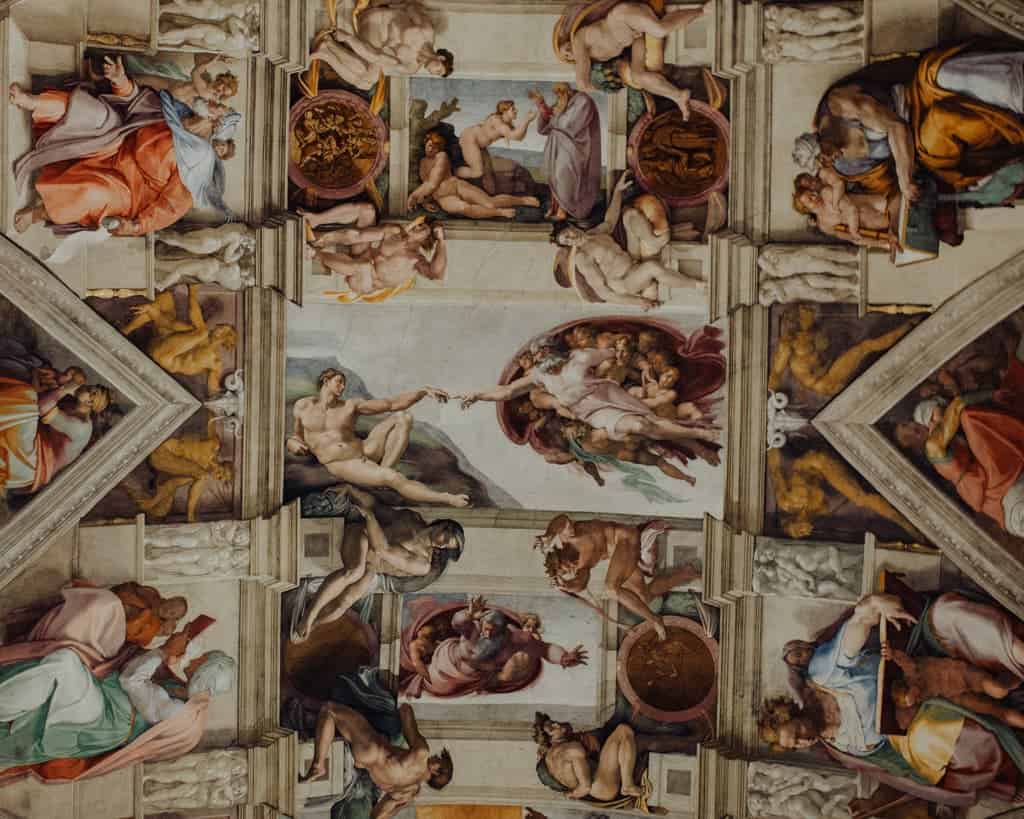
Another famous fresco by Michelangelo is the Last Judgement above the altar. On the sides of the chapel you will see paintings by other great artists that were here before Michelangelo’s frescoes. They were painted by 5 of the greatest Florentine artists of the time, who were known as the masters of the Quattrocento (Botticelli, Perugino, Pinturicchio, Ghirlandaio, Rosselli).
More interesting facts and information about the Sistine Chapel can be found in a separate article.
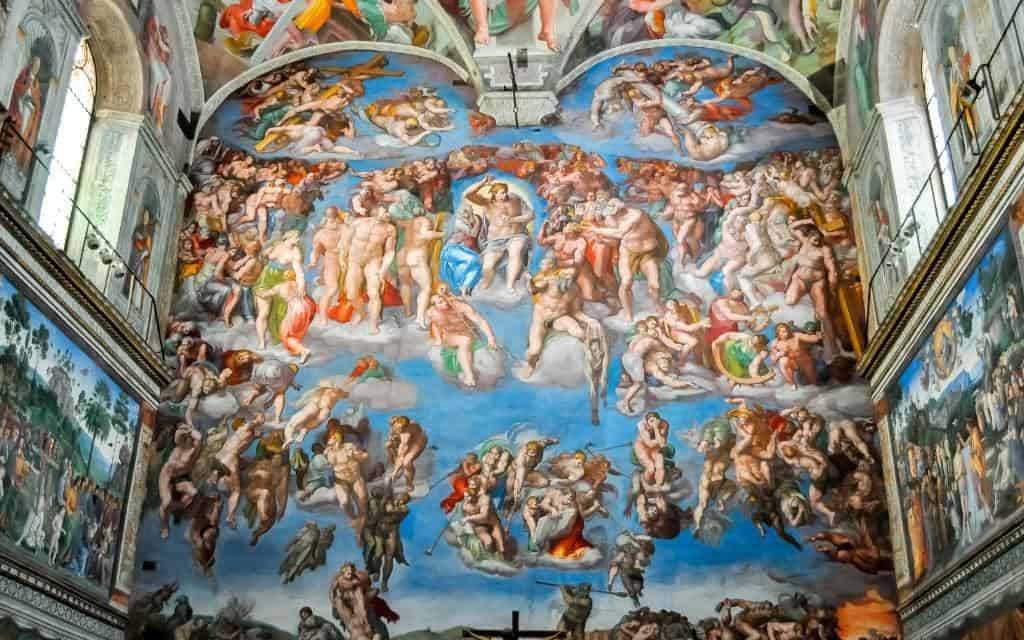
Where the Sistine Chapel lies: The Sistine Chapel is located inside the Vatican Museums. You can visit it as part of a regular tour of the Vatican Museums – you don’t need to buy an extra ticket.
How to get to the Sistine Chapel: Metro – line A → stop Ottaviano or Cipro and from there walk about 10 minutes to the entrance of the Vatican Museums
What are the opening hours of the Sistine Chapel in 2024:
- Monday to Saturday 8:00-19:00 (last entry at 17:00)
- In the high season from April to the end of October, opening hours on Fridays, Saturdays and selected days are extended until 20:00 (last entry at 18:00)
- Last Sunday of the month 9:00-14:00 (last entry 12:30)
How much is the entrance fee to the Sistine Chapel: Admission to the Sistine Chapel is included in the price of admission to the Vatican Museums (there is no extra charge to visit the Sistine Chapel). Full admission to the Vatican Museums and the Sistine Chapel is €20 + booking fee, reduced admission €8 (children 6-18 years, students 19-25 years inclusive) + booking fee. It is better to book in advance –tickets tend to sell out.
Vatican Museums (Musei Vaticani)
More than 6 million people visit the Vatican Museums every year, making them one of the most visited museums in the world. Here you will see a collection of more than 20,000 works of art divided into individual museums according to themes (and this is only a minimal part of the collection, as most of it is inaccessible).
What to see in the Vatican Museums can be found in a separate article. There’s so much to do that it’s better to pick a few places that are most interesting to you.

Viale Vaticano 51, Vatican City
How to get to the Vatican Museums: metro line A → Ottaviano stop and from there a few minutes on foot; the entrance to the museums is not via St Peter’s Square – you enter St Peter’s Basilica from there. More in the article about the Vatican Museums.
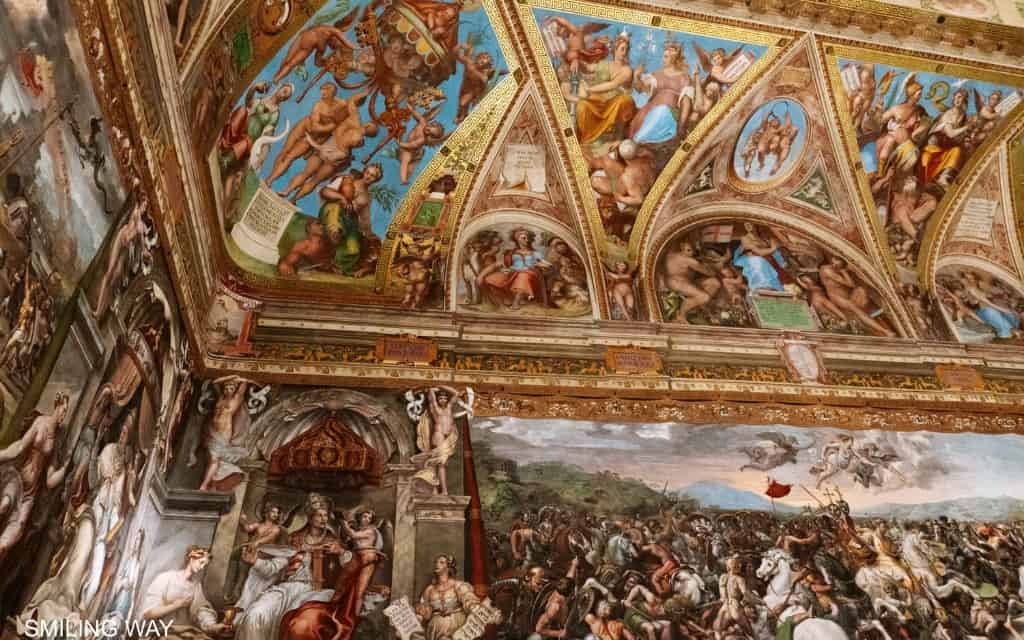
What are the opening hours of the Vatican Museums in 2024:
- Monday to Saturday 8:00-19:00 (last entry at 17:00)
- In the high season from April to the end of October, opening hours on Fridays, Saturdays and selected days are extended until 20:00 (last entry at 18:00)
- Last Sunday of the month 9:00-14:00 (last entry 12:30)
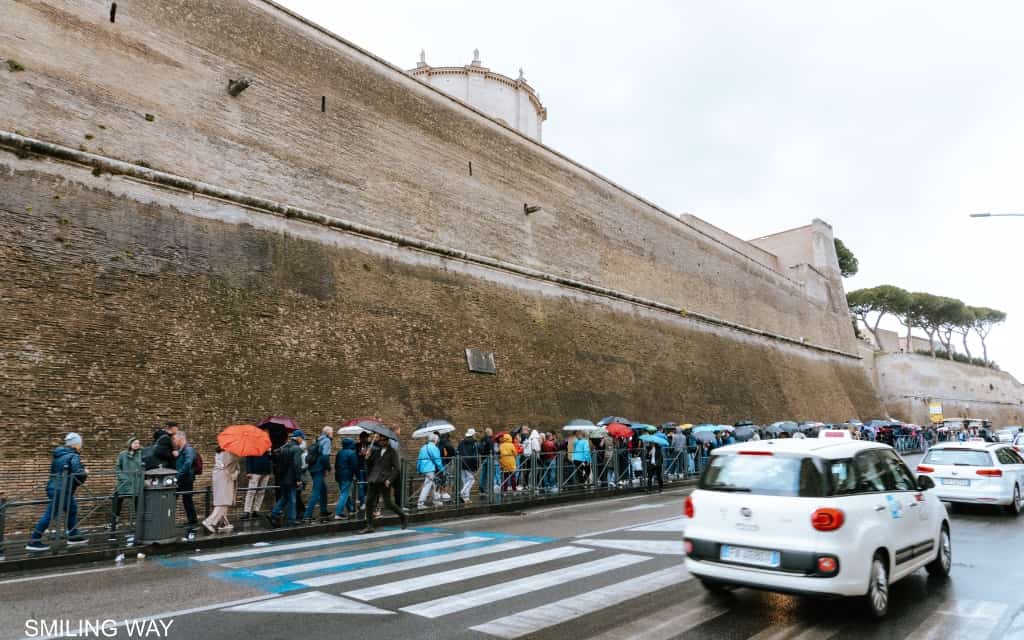
How much is the entrance fee to the Vatican Museums:
- Full admission 20 € + reservation fee
- Reduced admission 8 € (children 6-18 years, students 19-25 years inclusive) + booking fee
- The ticket includes entry to the Sistine Chapel, which can be found at the end of the museums.
- Tickets can sell out weeks in advance. It is better to book in advance.
- Free admission on the last Sunday of the month – no need to book in advance, but there are usually long queues.
How to skip the queues for the Vatican Museums and the Sistine Chapel: You can skip the queue by orderingtickets to the Vatican Museums and the Sistine Chapel online. At the venue, you will then go through the middle entrance for those who have booked a ticket in advance.
Castle of the Angels (Castel Sant’Angelo)
A short distance from the Vatican, on the right bank of the Tiber River, you will find the fortress of the Castle of the Angels, known as Hadrian’s Tomb. Hadrian was a Roman emperor who had the fortress built as a mausoleum for himself and his family. The papacy then took it over, fortified it and used the church as its refuge.
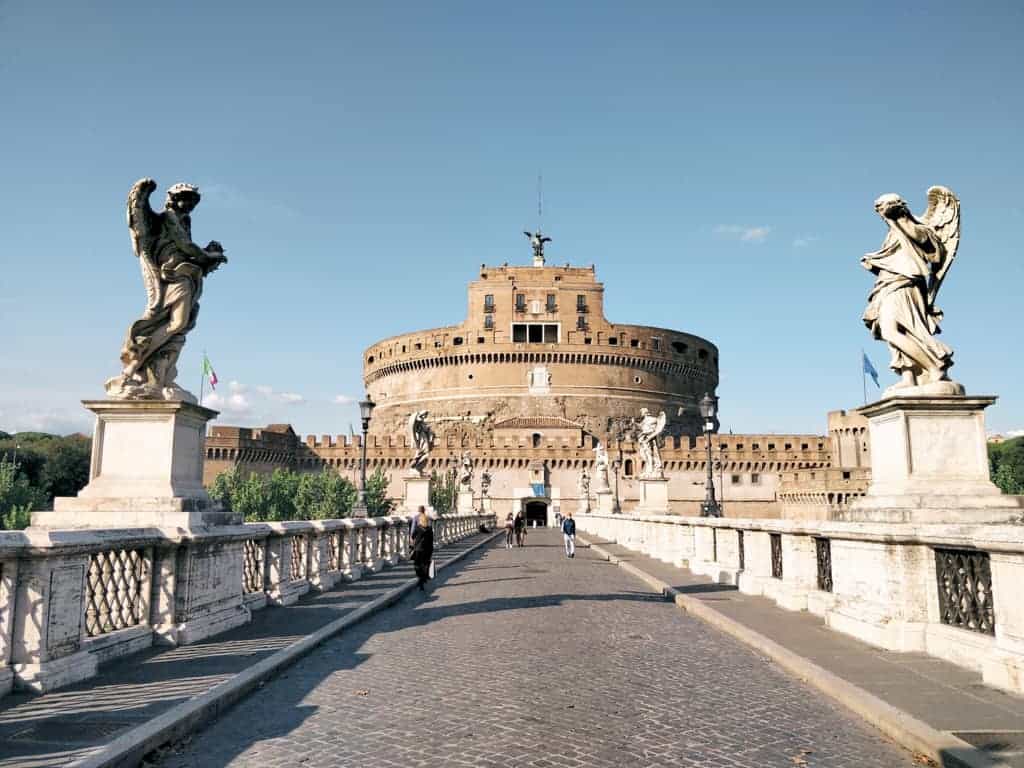
Today, the Angel Castle houses a museum, where you can learn more about the history of the fortress, take a peek into the sumptuous papal apartments and enjoy a beautiful view of the surrounding area.
Where is the Angel Castle:Lungo teverre Castello 50
How to get to Angel Castle: Bus – lines 23, 34, 49, 64, 87, 280, 492, 926, 990
Opening hours of the Angel’s Castle: Tuesday-Sunday 9:00-19:30 (ticket office closes at 18:30)
How much is the entrance fee to Angel Castle:
- Full admission 16 €
- Reduced entrance fee 3 € (EU citizens 18 – 24 years)
- Free on the first Sunday of the month – no advance booking possible
- Booking: during holidays and weekends it is recommended to book in advance (booking fee € 1).
- Part of the Roma Pass: yes (you can book your entry with the Roma Pass here – it is not compulsory)
Hotels in Rome 😴
Pantheon
The Pantheon is a perfectly preserved temple from 126 AD. It will get you with its architecture. The circular building has exactly the same diameter as the height (43.5 metres).
The dome is thus larger than the dome of St. Peter’s Basilica in the Vatican and is also the largest dome of unreinforced concrete in the world.

You just stand there and don’t understand how they did it. But they came up with a great idea – as the layers of concrete blocks rose higher and higher, they used lighter and lighter material. So the bricks at the very top are made of extra light pumice.
The Pantheon is even the oldest building in the world still in use. This is probably the reason why it has been preserved in such a good condition until today.

- Where is the Pantheon: Piazza della Rotonda
- How to get to the Pantheon: Metro – line A → Barberini stop
- Pantheon opening hours: 9:00-19:00 (last entry 18:30); closed 1 January, 1 May, 25 December
- How much is the entrance fee to the Pantheon: From 3. 7. There is a fee to enter the Pantheon. Admission is €5 and a reduced admission of €2 for 18-25 year olds. Admission is free for all on the first Sunday of the month. Reservation is possible here.
- How to avoid queues: Come at opening time when there are no queues. By lunchtime, the queues are already snaking around the whole square.
Piazza Navona
Piazza Navona is a beautiful square just 5 minutes from the Pantheon. In the middle of the Piazza Navona you will see another Bernini fountain – the Fountain of the Four Rivers, where the river gods symbolizing the largest rivers of the 4 main continents.
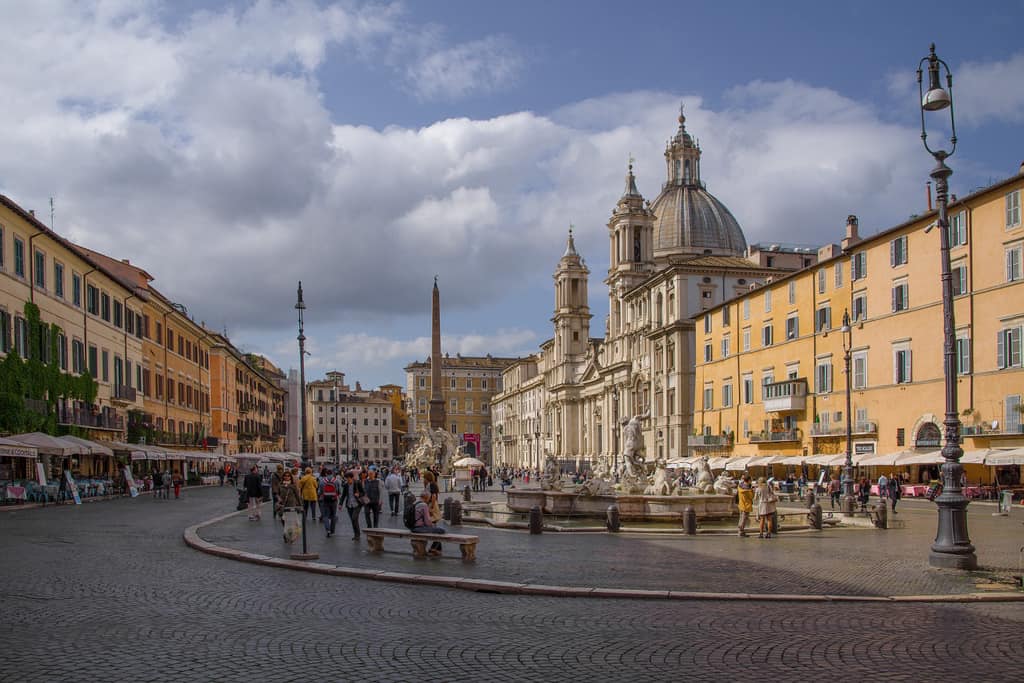
Besides the fountain, the square is also dominated by the Church of Sant’Agnese in Agone, which you can visit for free (open until 19:00 except Mondays). On the south side of the square is one of the sections of the Roman Museum, which covers the history of Rome from the Middle Ages to the 19th century. From the 19th century to the 19th century.
Capitoline Museums (Musei Capitolini)
The Capitoline Museums are art galleries on one of the seven hills of Rome, the Capitoline Hill. The museums are spread around the Piazza del Campidoglio, which was designed by Michelangelo. In the middle of the square stands a copy of the equestrian statue of Marcus Aurelius – the original is in the Capitoline Museums.
The museums also offer a collection of statues, paintings and other objects closely linked to the history of Rome.
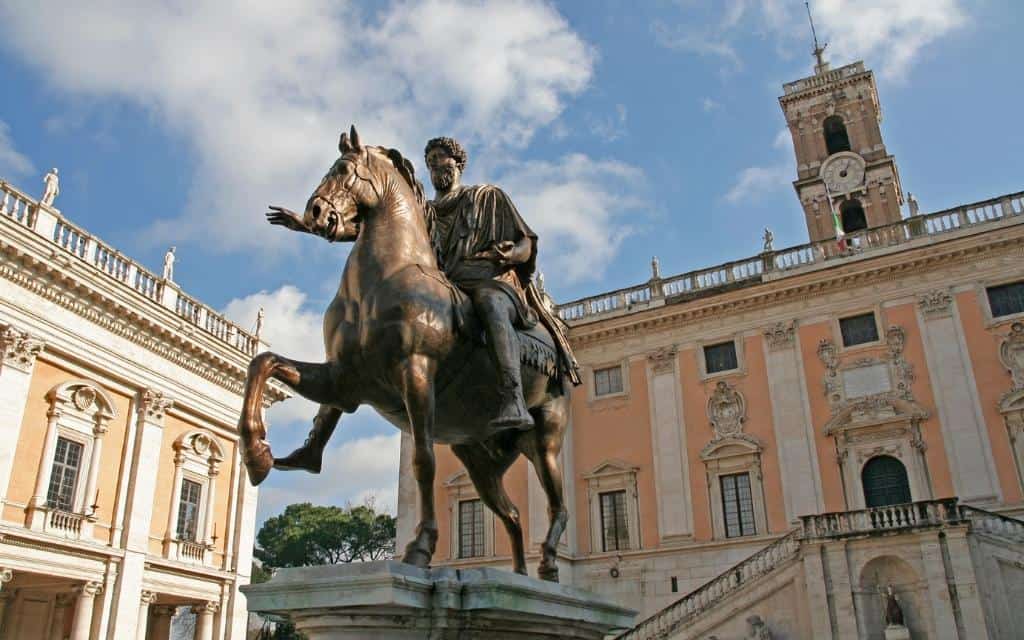
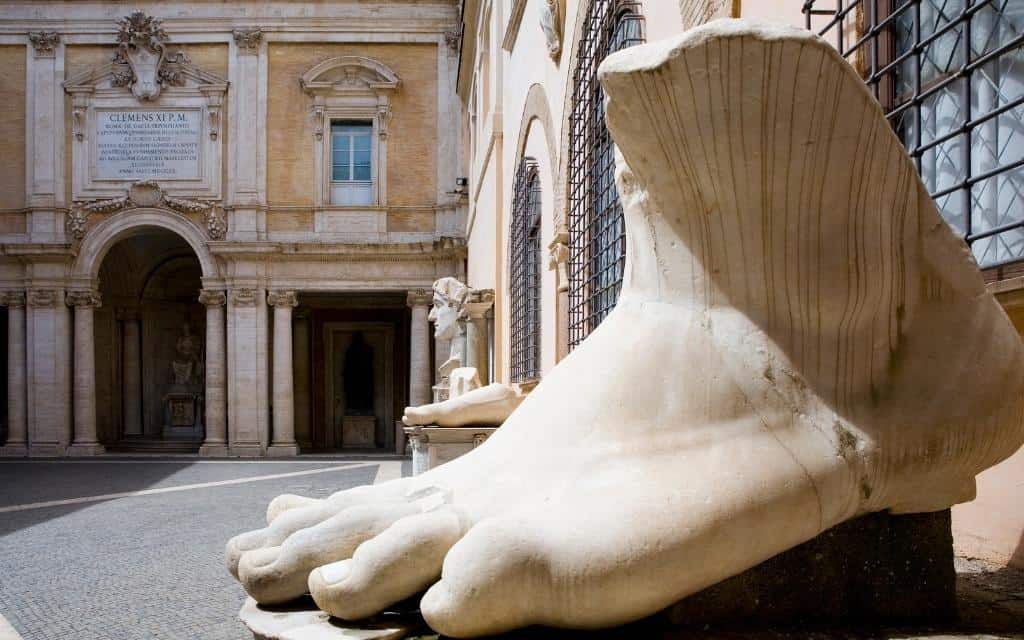
You’ll also see a statue of a she-wolf nursing two babies, a symbol of Rome. She saved and nursed Remus and Romulus. It was Romulus who founded Rome. The symbol of the wolf is therefore also in the emblem of the AS Roma football team.
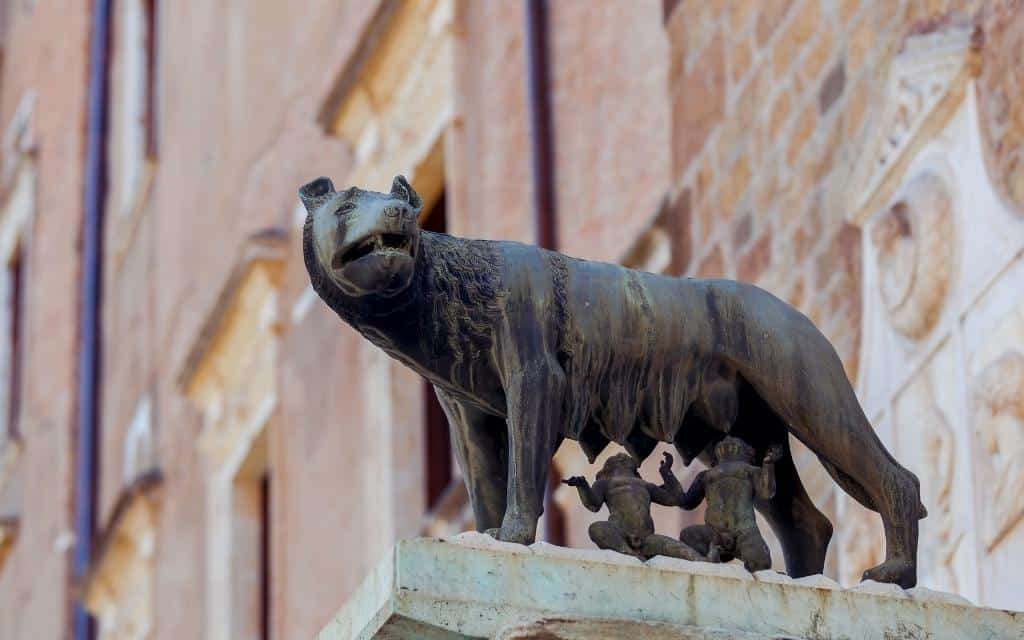
- Where is the Capitoline Museums: the Piazza del Campidoglio
- Getting there : 1 km from Colosseo metro station (line B)
- Opening hours: 9:30-19:30 (last entry one hour before)
- Admission to the Capitoline Museums: full admission 13 €, reduced admission 11 €
- Booking: not required, but you can book at www.museicapitolini.org
- Part of the Roma Pass: yes
Basilica of Santa Maria in Aracoeli (Basilica di Santa Maria in Ara coeli)
A hidden gem in the centre of Rome? This is exactly how one could describe the Basilica of Santa Maria in Aracoeli. From the outside, it looks inconspicuous, but don’t let that put you off. Inside, it is beautifully decorated, including Renaissance frescoes by the painter Pinturicchio.
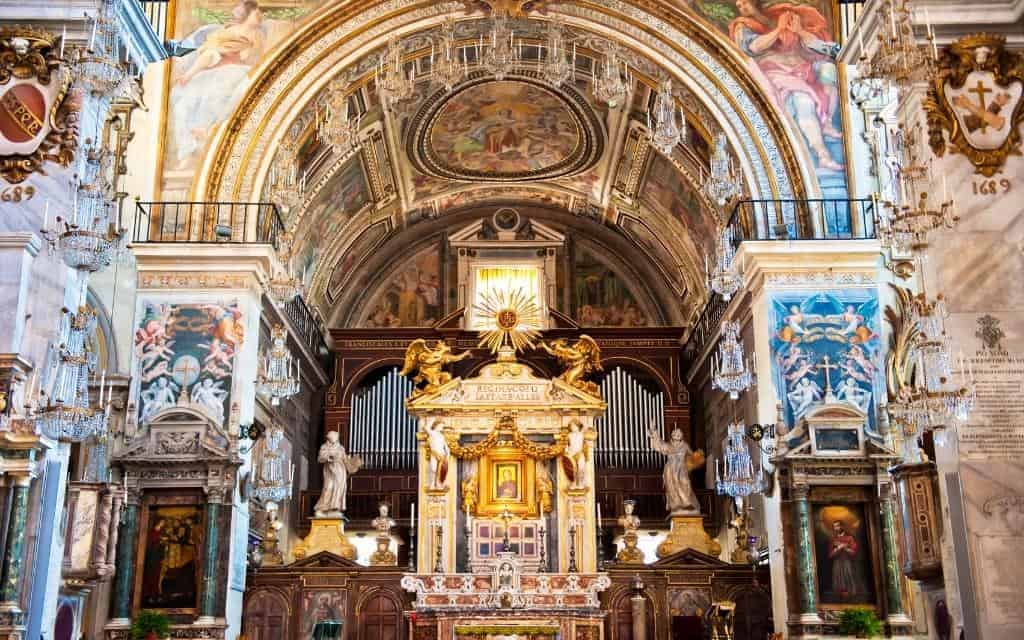
The Basilica is on the left at the top of the high steps on the path from Piazza Venezia to Piazza Campidoglio, where the Capitoline Museums are.
- Where is the Basilica of Santa Maria in Aracoeli: Scala dell’Arce Capitolina, 12
- How to get there: Metro – line B → stop Colosseo and from there 10 minutes on foot
- Opening hours: 7:00-19:00
- How much is the entrance fee: free
- Reservation: no
Hotels in Rome 😴
Basilica of Our Lady of the Snows (Basilica Papale di Santa Maria Maggiore)
The Basilica of Santa Maria Maggiore (Basilica of Our Lady of the Snows) is one of the four papal basilicas and one of the oldest basilicas in Rome. Several popes and the famous artist Gian Lorenzo Bernini, who designed many places in Rome (Trevi Fountain, St. Peter’s Square, St. Peter’s Basilica and others), were buried in the basilica.
The interior of the basilica is decorated with mosaics from 5. The mosaics from the 5th century depict 36 scenes from the Old Testament.
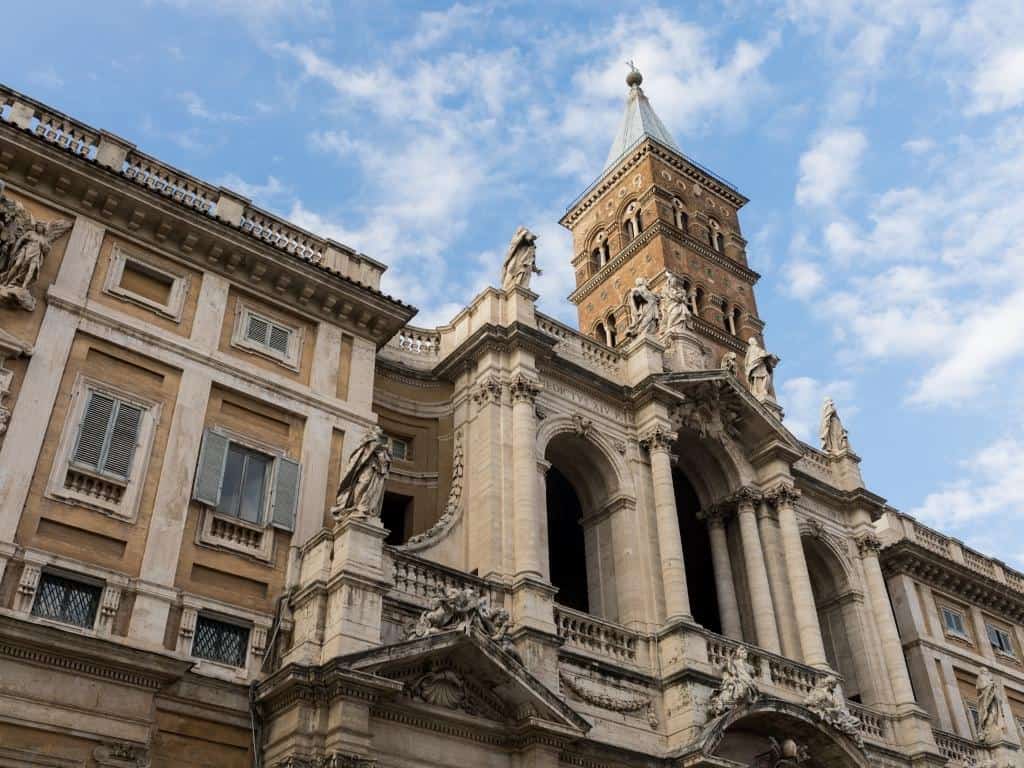
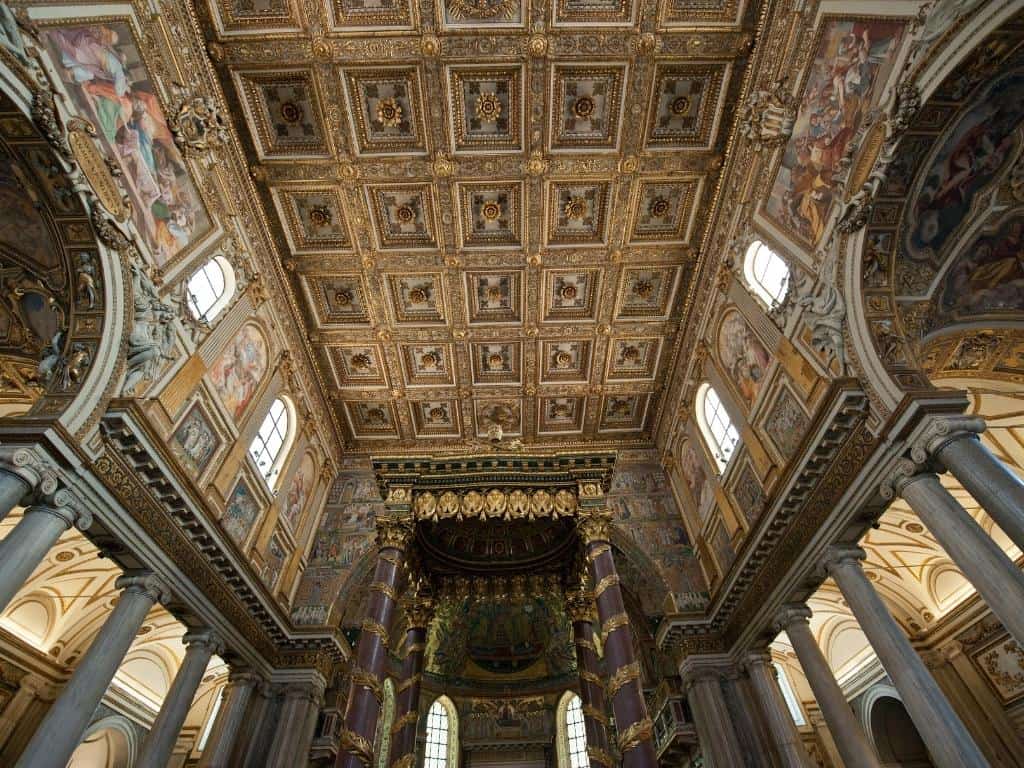
- Where is the Basilica of Santa Maria Maggiore: Piazza Santa Maria Maggiore, a short walk from Termini Station
- How to get there: Termini metro stop
- Opening hours: 7:00-18:45
- How much is the entrance fee: free
- Reservation: no
Lateran Basilica (Basilica di San Giovanni in Laterano)
The Lateran Basilica is the oldest church building in Rome. In 896, however, after a strong earthquake, almost nothing was left of it and it was rebuilt only in the 17th-18th centuries.
The Archbasilica is the home of the Diocese of Rome and technically acquires the status of the most important Roman Church.
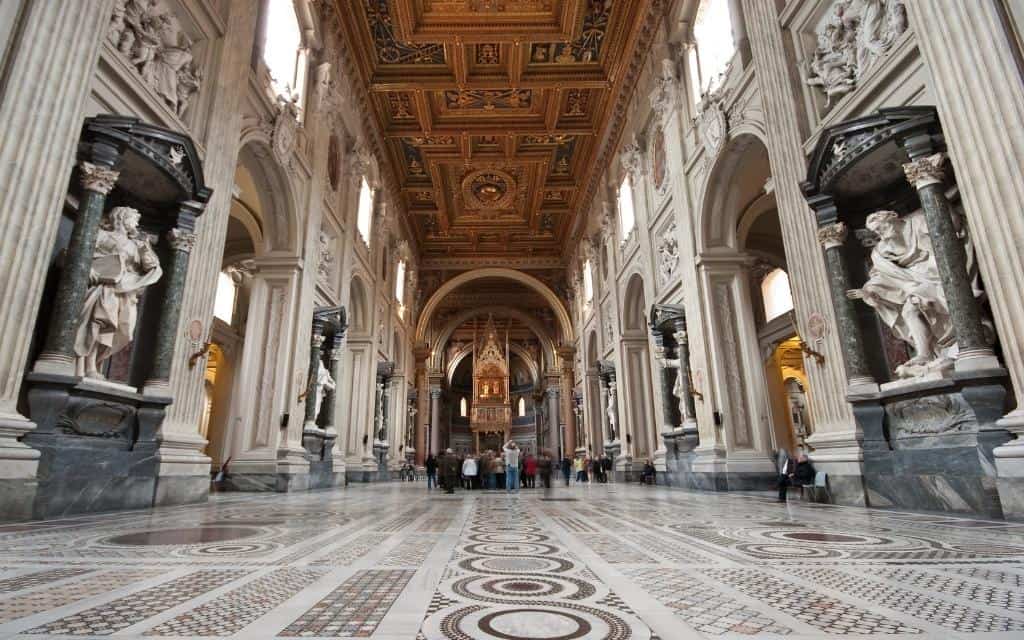
- Where is the Lateran Basilica: Piazza del Laterano
- How to get there: San Giovanni metro station (line A)
- Opening hours: Monday-Saturday 9:00-16:30
- How much is the entrance fee to the Lateran Basilica: Free
- Reservation: no
Basilica Papale San Paolo fuori le Mura
St Paul’s Basilica outside the Walls is another important papal basilica in Rome. And others that will absolutely captivate you with their interior. On the walls you will see medallions of all officially recognized popes from St. Paul to the present day.
Just above the tomb of the Apostle St. Paul’s Basilica was reportedly built.
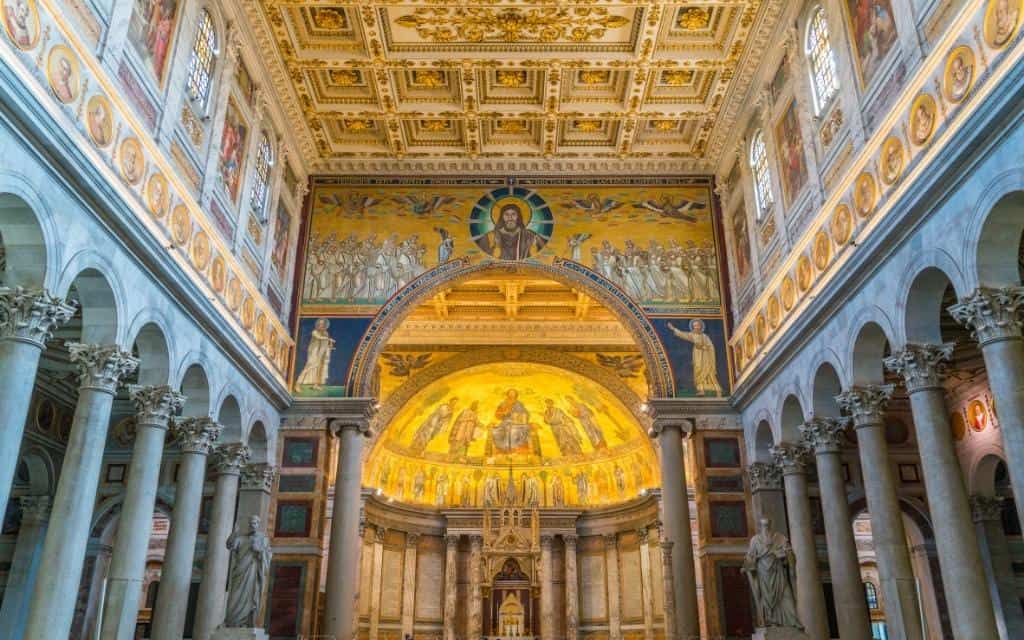
- Piazzale San Paolo 1
- How to get there: Garbatella metro station (line B)
- Opening hours: daily 7:00-18:30
- How much is the entrance fee: free
- Reservation: no
National Roman Museum (Museo Nazionale Romano)
The National Roman Museum is divided into 4 main collections, which are housed in different palaces. Before your visit, you buy one combined ticket that gets you into all the places. You have 1 week to visit all sites.
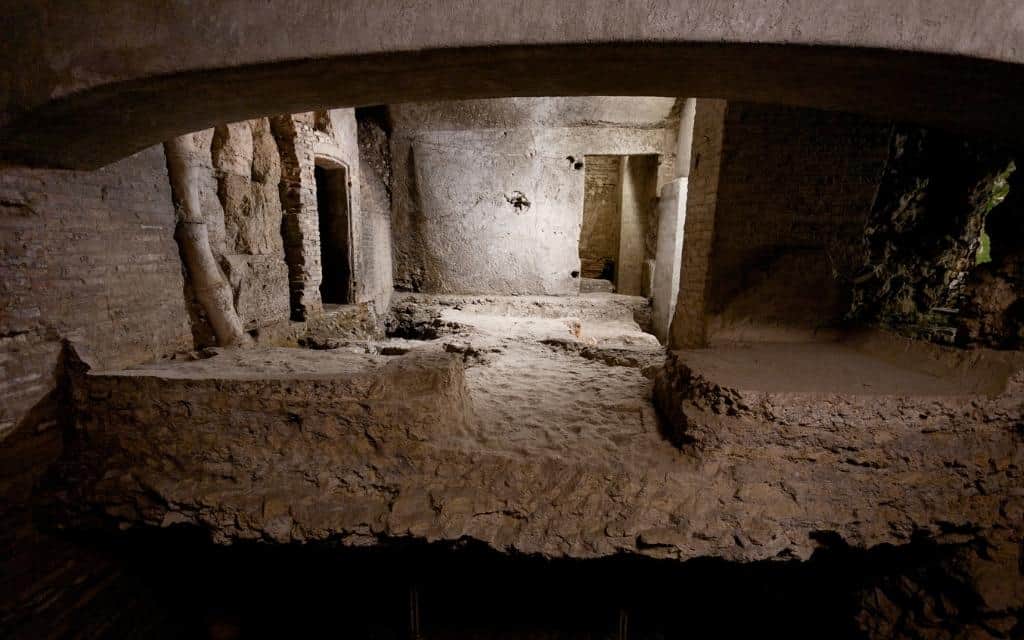
It also includes Crypta Balbi, where you can go back in time thanks to the local excavations. You will see how the site was used from ancient times through the Middle Ages and Renaissance to the modern era.
Read more about each museum in our article on the best museums in Rome.
How much is the entrance fee to the National Roman Museum:
- Combination ticket: full admission 12 €, reduced admission 8 € (EU citizens 18-25 years), booking fee 2 €
- Ticket for 1 museum: full admission 8 €, reduced admission 2 € (EU citizens 18-25 years), booking fee 2 €
- Free admission for everyone on the first Sunday of the month – no advance reservations possible
- Part of the Roma Pass: yes
Borghese Gallery (Galleria Borghese)
If you love art, the Borghese Gallery should be on your list. It houses one of the world’s finest collections of art in sculpture, painting and architecture.
The collection was created by Cardinal Scipione Borghese in 17th century and remains on display today in the villa he built to protect it. That is why she is called the Queen of all private collections in the world.
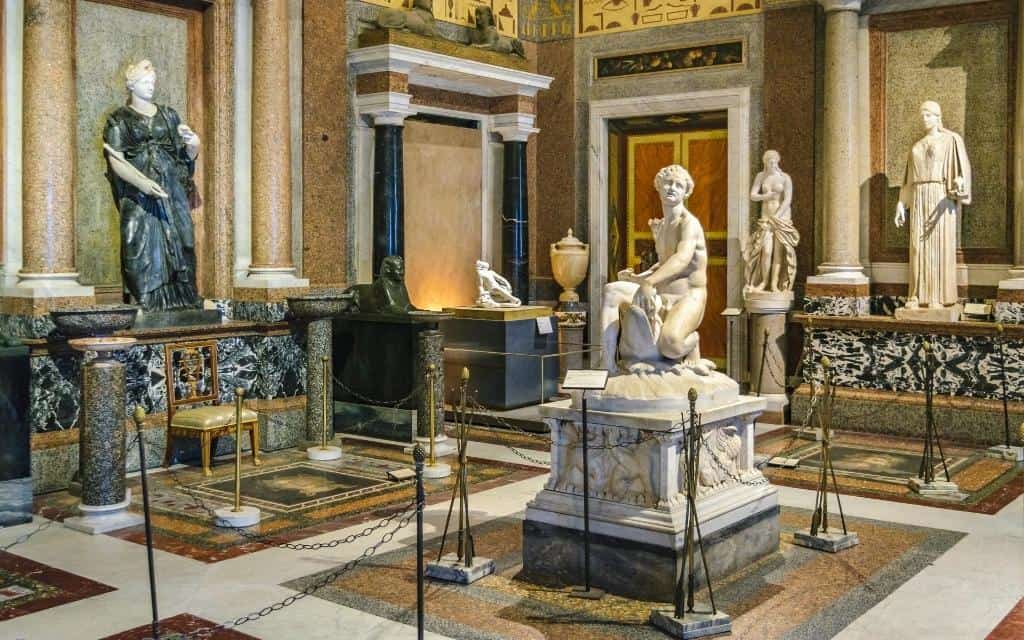
Where is the Borghese Gallery: 5 Piazzale del Museo Borghese in Borghese Park
To get to the Borghese Gallery: metro – line A → stop Piazza di Spagna; bus – lines 5, 19, 52, 53, 63, 86, 88, 92, 95, 116, 204, 217, 231, 360, 490, 491, 495, 630, 910, 926
Opening hours: Tuesday, Friday and Saturday 9:00-19:00, Wednesday 9:00-22:00, Thursday 9:00-21:00 (you choose the specific time slot when booking)
Admission to the Borghese Gallery: full admission 13 €, reduced admission 4 € (EU citizens 18-25 years), booking fee 2 €
Free admission for everyone on the first Sunday of the month – advance reservation required
Part of the Roma Pass: yes
Reservation: yes. You have 3 options to make a reservation: by phone, by email or via the website.
- Email [email protected] with the number of people, age, date and approximate time that would work for you. They will respond within 48 hours.
- The second option is to make a reservation for the Borghese Gallery online.
Please note: The Borghese Gallery tends to sell out long in advance – book in advance. You must be there at least half an hour beforehand. In the meantime, you can stroll through the gardens.
Villa Borghese
Villa Borghese is known locally as the Green Lungs of Rome. This is a large park next to the Borghese Gallery, where you can rent boats, admire the architecture or parrots in the trees, or take shelter from the sun on hot days. It also offers a magnificent view of Rome and Piazza del Popolo.
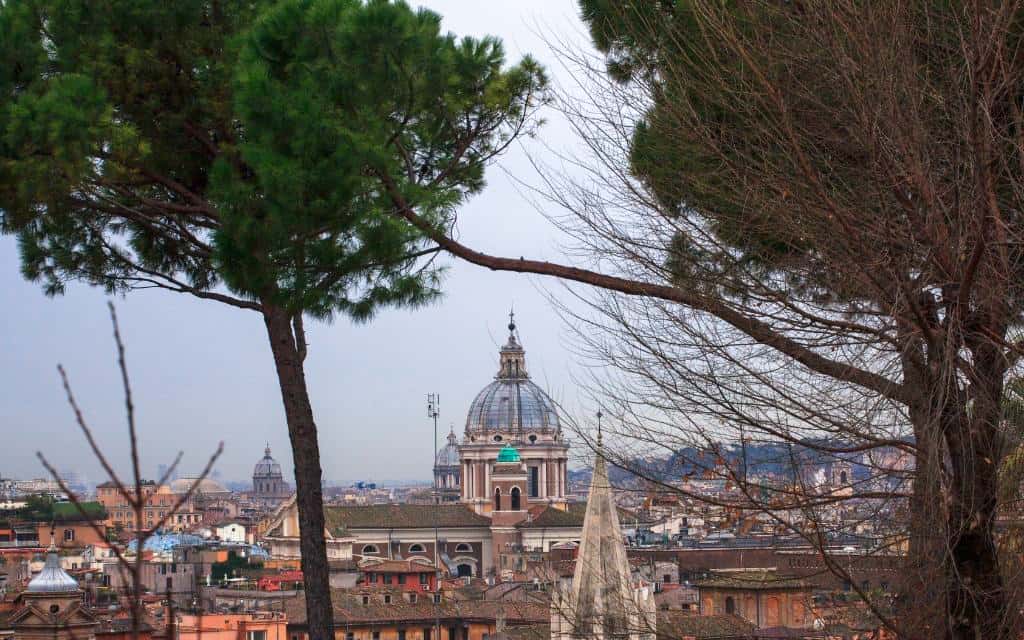
Piazza del Popolo
Piazza del Popolo is located beneath Villa Borghese Park. An Egyptian obelisk with original hieroglyphs stands in the centre of the vast square. One of the oldest and largest in Rome.
Now you may be wondering how he got here. The first Roman Emperor Augustus brought it here from Egypt as his war trophy. For centuries it stood on the Circus Maximus in ancient Rome, and it was not until the late 1500s that the obelisk was moved to the Piazza del Popolo.
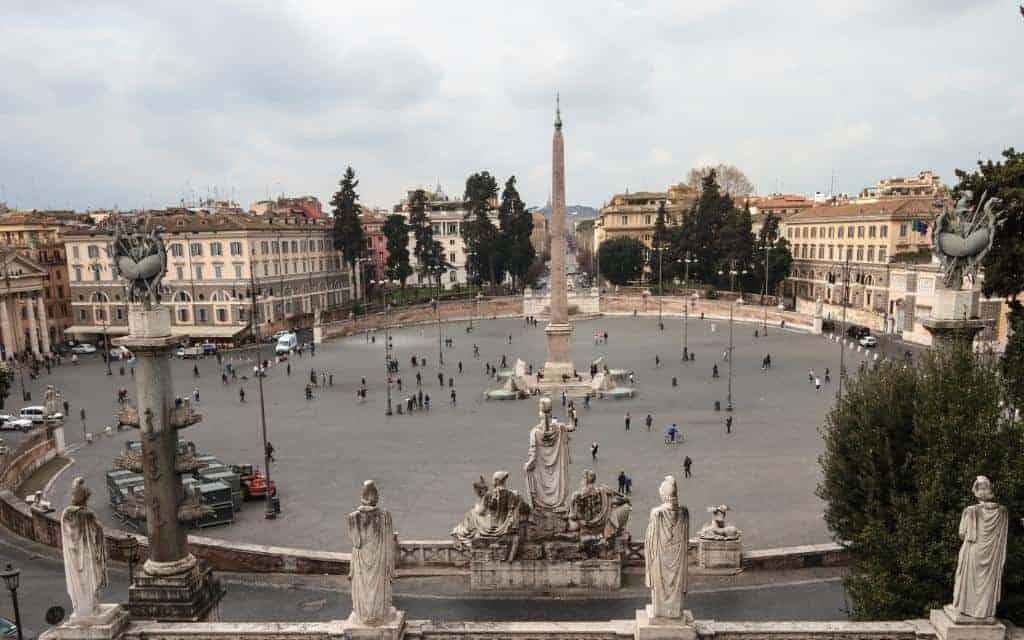
Baths od Caracalla (Terme di Caracalla)
The Caracalla Baths were built by Marcus Aurelius between 212 and 216. It became one of the largest and most interesting thermal complexes in antiquity. The spa included swimming pools, gymnasiums, libraries, galleries, shops and gardens. They can hold up to 1,600 people.
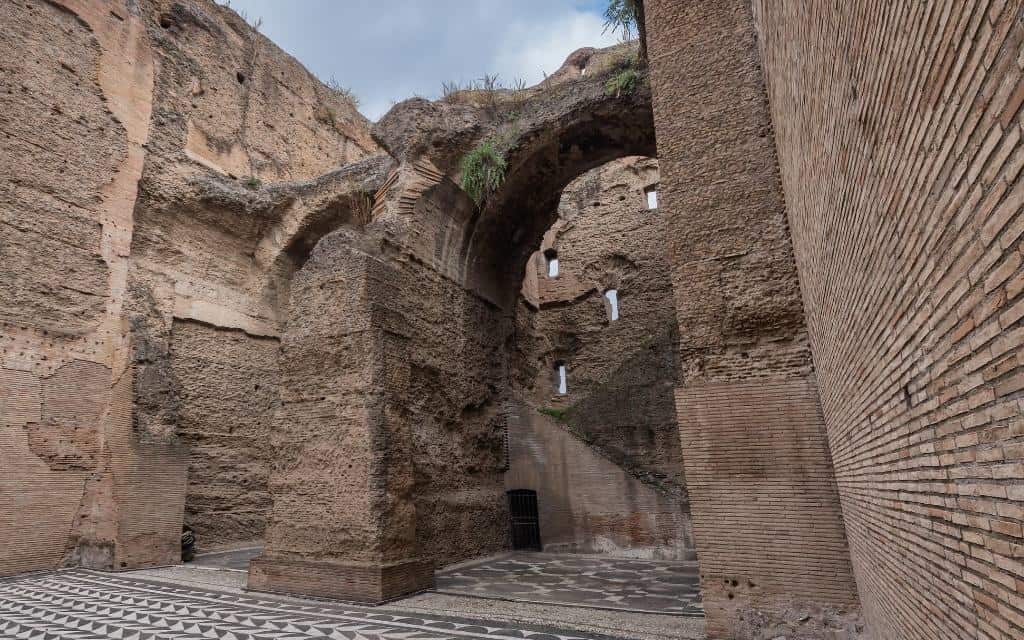
- Where is the Caracalla Spa: the Vialle delle Terme di Caracalla
- How to get there: Metro – line B → Circo Massimo stop, bus → lines 118, 160, 628
- Opening hours: in high season March-August from Tuesday to Sunday 09:00-19:15, off-season closes earlier according to sunset (last entry always one hour before)
- Admission: full admission 8 €, reduced admission 2 € (EU citizens 18-25 years)
- Free admission for everyone on the first Sunday of the month – no advance reservations possible
- Booking: not compulsory, but can be booked for an additional fee of 2 € – booking for Caracalla Spa
- Part of the Roma Pass: yes
Circus Maximus
The Circus Maximus is another famous monument of ancient Rome, located just a short walk from the Colosseum. Some may be disappointed that so little has been preserved, but Circus Maximus is more about atmosphere. An idea of how car races used to be held here on a venue that once held up to 300,000 spectators.
The Circus Maximus is adjacent to the Palatine Hill and on the other side is the Aventino Hill.
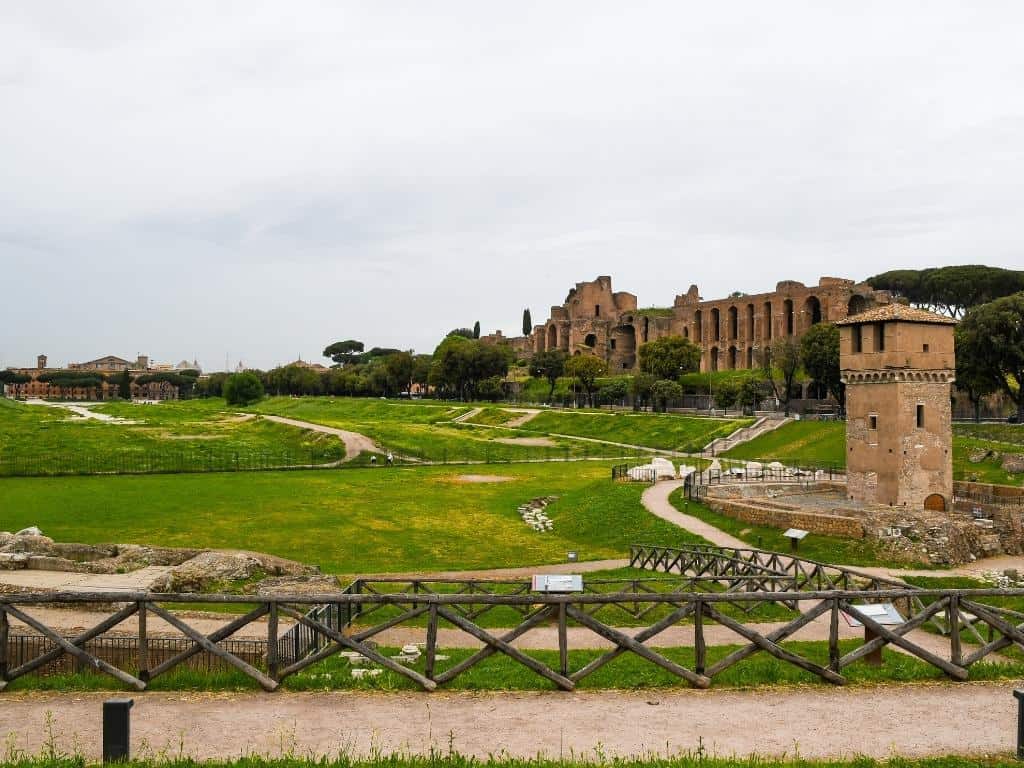
- Admission: only for access to the archaeological excavations – full admission 5 €, reduced admission 4 € (EU citizens 18-25 years)
- Opening hours: Tuesday-Sunday 09:30-19:00 in summer, Tuesday-Sunday 9:30-16:30 in winter (late October to March)
- How to get to the Circus Maximus: Metro – line B → Circo Massimo stop or 15 minutes walk from the Colosseum (after the Arch of Constantine straight ahead)
- Reservation: no
- Part of the Roma Pass: yes
The Mouth of Truth (Bocca della Verità)
The Mouth of Truth is a popular attraction located just behind the Circus Maximus. It is a sewer hatch with a sculpture of a face.
According to legend, the Mouth of Truth is a lie detector. You can stick your hand in your mouth and if you lie, it will be bitten off. Will you try it too :)?
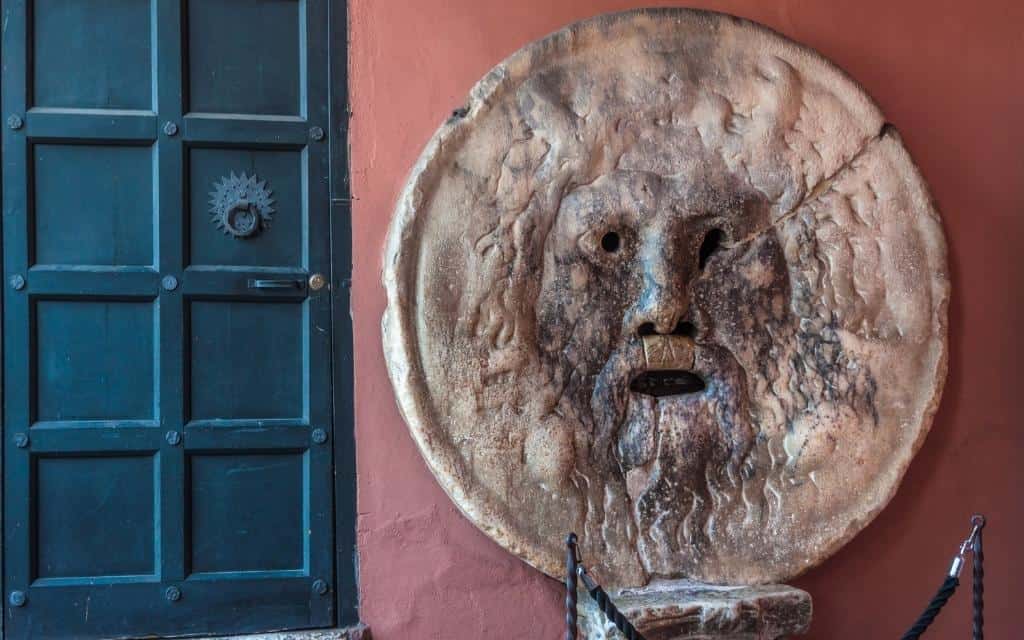
The Mouth of Truth is located next to the entrance to the Church of Santa Maria di Cosmedin, which you pass through to reach the exit. The church is smaller and more intimate than the more famous churches in Rome, but it is certainly beautiful.
There are long lines, so it’s best to come first thing in the morning at 9:30, when the church and the Mouth of Truth open. If you come even earlier, you will see the Mouth of Truth through the bars.
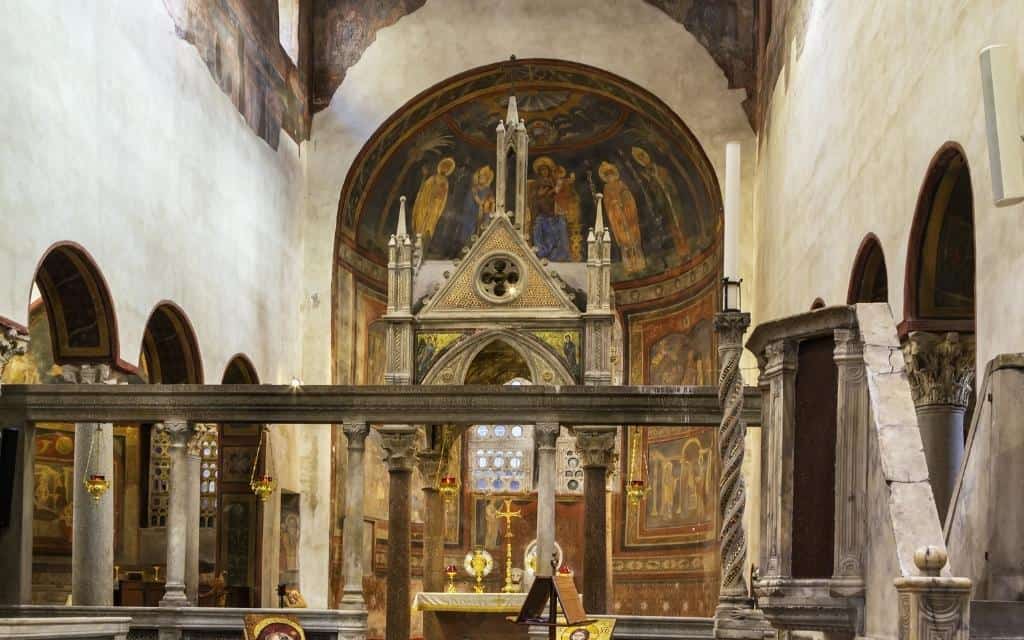
Trajan’s Forum (Mercati di Traiano)
Trajan’s Forum was the first Roman shopping centre to be established during the reign of Emperor Trajan. It had 6 floors with up to 150 different shops, called tabernae.
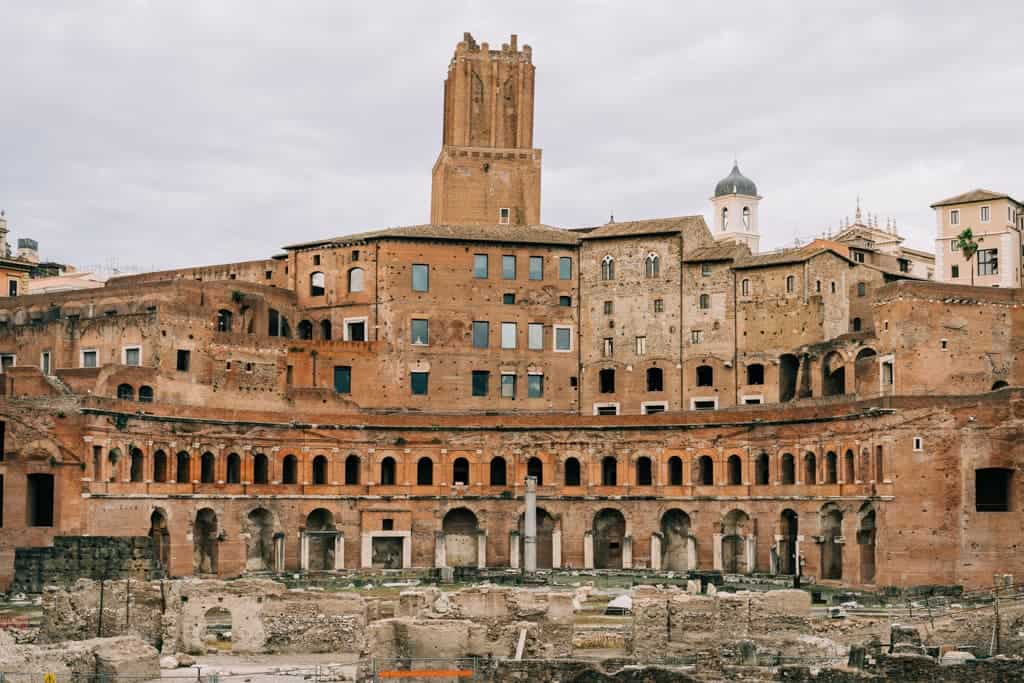
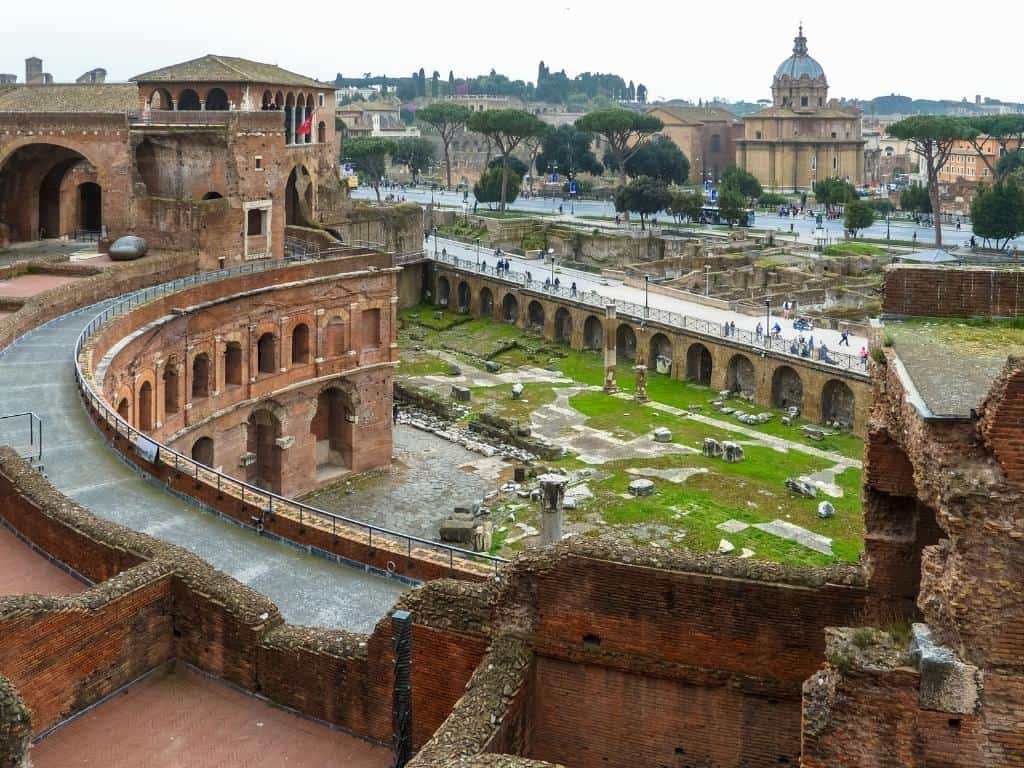
- Where is Trajan’s Forum: Via IV Novembre, 94
- How to get there: Metro line B → stop Colosseo or Cavour, bus – lines 40, 53, 60, 64, 70, 80, 85, 57, 117, 170, 175, 186, 271, 571, 810, H, N7, N8, N9, N15, N18 → stop Piazza Venezia; Trajan’s Forum is located between the Colosseo and Piazza Venezia
- Opening hours: daily 9:30-19:30
- How much is the entrance fee to the Trajan Forum: full entrance fee 16 €, reduced entrance fee 12 € (EU citizens 18 – 24 years old)
- Reservation: no
- Part of the Roma Pass: yes
Tip: If you’re looking for comfortable accommodation close to the centre, with good access to the airport and good prices, check out the following hotels:
- Hotel Borromeo – cosy period rooms with private bathrooms and air conditioning (for 2-4 people); a few minutes from the metro and within walking distance of the historic centre; beautiful roof terrace with seating and sun loungers
- Hotel Impero – cheap hotel with excellent breakfast and roof terrace; older facilities but clean and cosy; quiet at night
Aventine
The Aventine is one of the 7 Roman hills, located near the Colosseum between the Circus Maximus and the Tiber River. The hill is surrounded by medieval walls, there are several beautiful churches, villas and gardens.
One of the most interesting places is the Giardino degli Aranci, with its orange trees and terrace, which offers one of the best views of Rome.
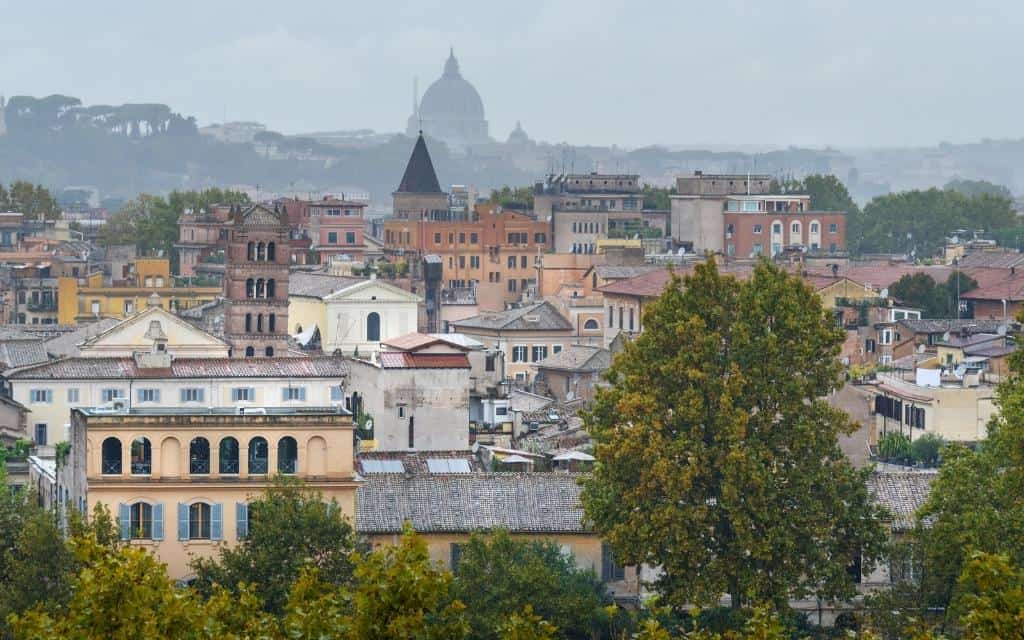
Right at the entrance to the gardens you will see a fountain with a mask in a niche and an Egyptian granite bowl that was found during excavations in the Roman Forum. For our money, it’s a more interesting place than the infamous Mouth of Truth, even if there’s no legend attached to the fountain.

Another favourite spot on the Aventine Hill is the keyhole in the doorway to the Villa del Priorato di Malta, which provides a perfectly framed view of St Peter’s Basilica. You’ll just have to wait in line for a while.
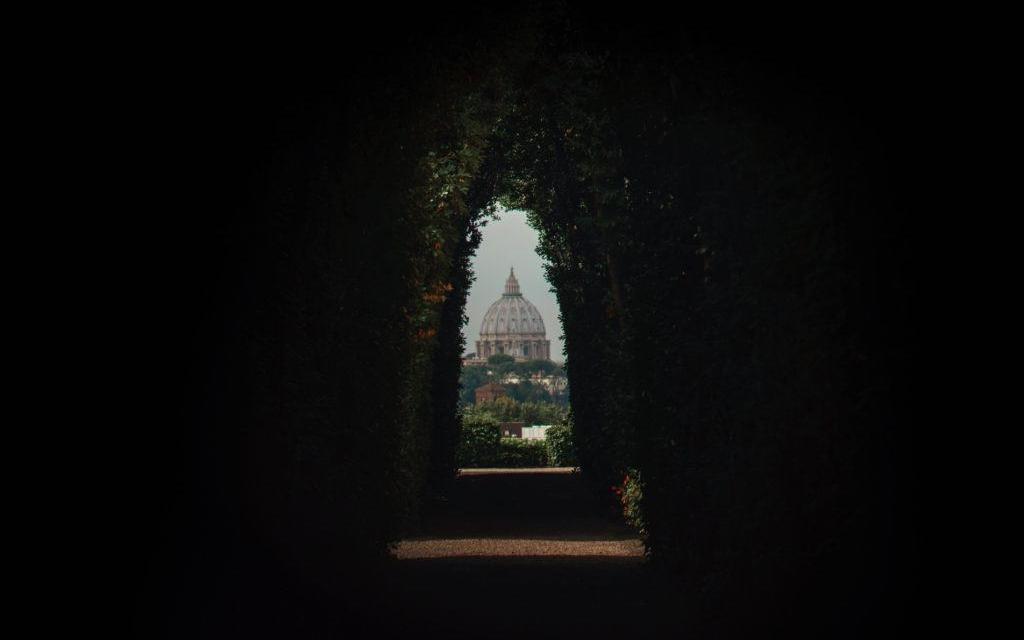
Catacombs of Rome (catacombe di Roma)
The catacombs are underground passages that were used for centuries as burial grounds for Jewish, pagan and early Christian Roman citizens from the second to the fifth century. They are said to be up to 20 km long. The catacombs can be found in several places on the outskirts of Rome.

Catacombs of St. Calixto (catacombe di San Callisto)
- Where is Via Appia Antica 110/126
- How to get there: Metro – line A (from Termini train station) → stop Piazza San Giovanni in Lateran – then change to bus 218 (direction Ardeatine) → stop Fosse Ardeatine
- Opening hours: Monday-Tuesday and Thursday-Sunday 9:00-12:00 and 14:00-17:00
- How much is the entrance fee: full admission 8 €, reduced admission 5 € (children 7-16 years)
Priscilla’s Catacombs (catacombe di Priscilla)
- Where is Via Salaria 430
- How to get there: Metro – line B1 → stop Libia or St. Agense/Annibaliano station, Bus – lines 63, 92, 310 → stop Priscilla
- Opening hours: Tuesday-Sunday 9:00-12:00 and 14:00-17:00
- How much is the entrance fee: full admission 8 €, reduced admission 5 € (children 7-16 years)
Domitilla catacombs (catacombe Domitilla)
- Where is Via delle Sette Chiese 282
- How to get there: Metro – line A (from Termini train station) → stop Piazza San Giovanni in Lateran – then change to bus 218 (direction Ardeatine) → stop Fosse Ardeatine (same as at the Catacombs of St. Calixto)
- Opening hours: closed on Tuesdays, other days 9:00-12:00 and 14:00-17:00
- How much is the entrance fee: full admission 8 €, reduced admission 5 € (children 7-16 years)
Catacombs of Saint Sebastian (catacombe di San Sebastiano)
- Where is Via Appia Antica 136
- How to get there: Metro – line A (from Termini train station) → stop Piazza San Giovanni in Lateran – then change to bus 218 (direction Ardeatine) → stop Fosse Ardeatine (same as at the Catacombs of St. Calixto)
- Opening hours: daily 10:00-17:00
- How much is the entrance fee: full admission 8 €, reduced admission 5 € (children 7-16 years)
Gianicolo hill
Another great view of the old town can be enjoyed from the Gianicolo hill, which is not one of the Seven Hills of Rome, but that doesn’t detract from its points. In good visibility, you can see the panorama of the Apennine Mountains behind Rome.
Gianicolo is located north-west of Trastevere.
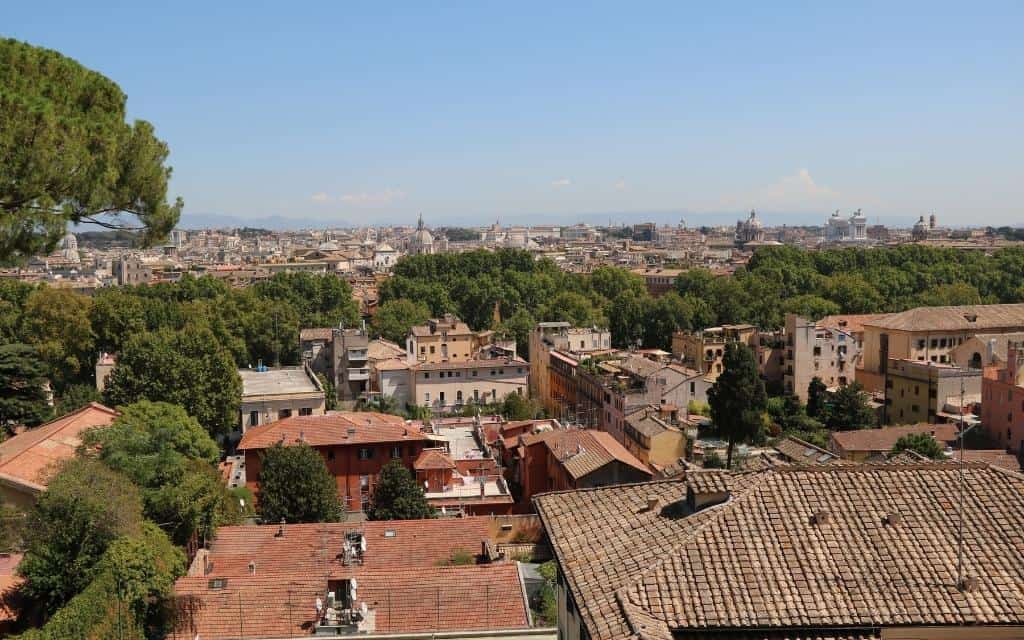
How to save money on sightseeing and transport in Rome?
One way to save money in Rome is with the Roma Pass and the Vatican and Rome Card. And in this article, we’ll take a closer look at them. But it always depends on the specific situation and how much you want to visit. I recommend you first calculate the entrance fee, transport and then compare everything with the charts below.
Roma Pass allows you to get free or reduced admission to more than 45 monuments and museums in Rome, including unlimited public transport travel around Rome and other benefits.
Rome&Vatican Pass also gives you free entry to the Vatican Museums and the Sistine Chapel, plus unlimited sightseeing bus travel for 3 days. Find out more in my detailed review.
Ticket Reservation
Book your tickets in advance and skip the line at the door:
Where to stay in Rome?
I recommend staying near Termini Station, where you arrive from Fiumincino or Ciampino Airport. There are several nice hotels, many good restaurants nearby, grocery stores (Coop), good metro connections to the whole of Rome and you can walk to the centre in a few minutes.
Tips for the best accommodation in Rome:
- Hotel Impero – cheap hotel with excellent breakfast and roof terrace; older facilities but clean and cosy; quiet at night
- Hotel Borromeo – 3* hotel with air conditioning and roof terrace; minutes from the metro and within walking distance of the historic centre
- Hive hotel – 4* hotel with modern and clean rooms; rooms and suites for up to 4 people available; spacious roof terrace with seating and restaurant
- hu Roma Camping in Town – accommodation in air-conditioned bungalows or chalets, restaurant, refreshments, free parking, jacuzzi, swimming pool, bar
Hotels in Rome 😴
We’ve created a detailed guide on where to stay in Rome (best neighbourhoods and hotels, a map and how to get from your accommodation to the sights or the airport).
Where to eat in Rome?
Rome not only attracts you with its sights, but also with its delicious cuisine. And there are so many great restaurants. But as it happens, it is better to look outside the historic centre itself. Prices are higher here and the quality of the food doesn’t always match it.
For good cuisine, cross the bridge into the Trastevere district. The cooking here is excellent. Almost every corner. Moreover, the district itself is beautiful and worth seeing.
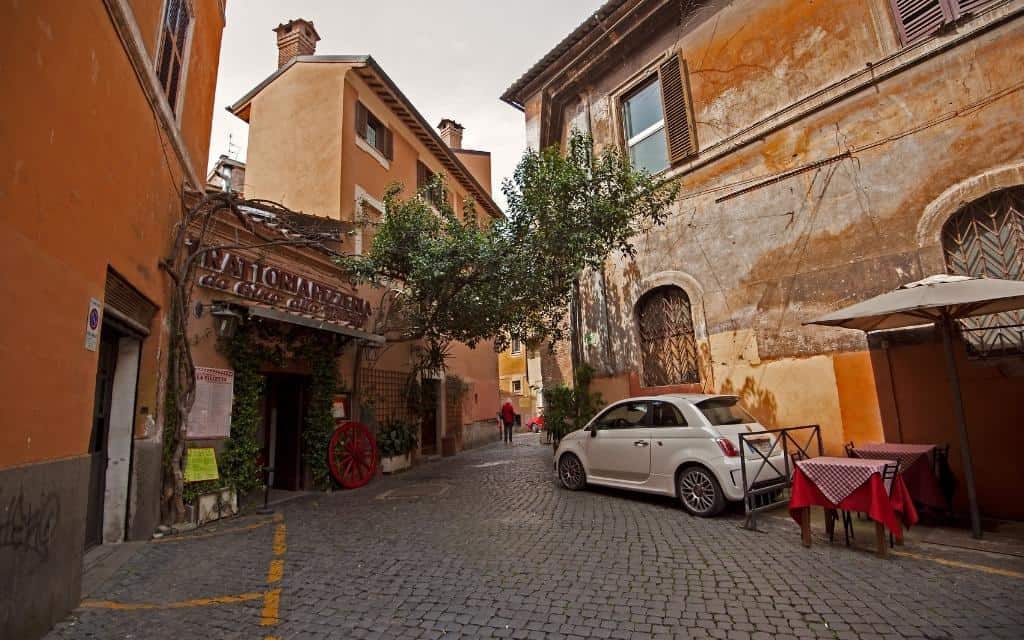
Tips before visiting Rome
- Keep an eye on things. Especially at the main tourist attractions.
- Beware of ticket scams. Only buy from verified companies.
- Be cautious when crossing roads. The locals like to honk their horns and often don’t drive in a very regulatory manner. For example, our bus driver ripped off his mirror while driving and it didn’t upset him at all :).
- Choose proper footwear. Rome is typical of its uneven cobblestone sidewalks.
- Admission to churches and basilicas is free, but donations are still welcome.
- There are over 2,000 fountains throughout Rome, most of which are called nasoni. They literally mean big noses, little fountains where you can refill your drinking water.
- There are several P-Stop information points around the city. They’re glass-walled, and for €1 you can pop in for an air-conditioned toilet. In addition, there is a worker and the place also serves as tourist information. You can find the P-Stop at the Lateran Basilica, Termini Station or on Via Giuseppe Zanardelli near Piazza Navona in the centre.
- You can also go to the toilet in the restaurant, but they don’t always let you. Just ask and sometimes maybe order something small if they had a customer-only restroom. The fee is almost everywhere 1 €. Toilets are also commonly found in the Colosseum, the Vatican or museums (be prepared to pay €1 in some places).
- One last thing about toilets: toilet bowls tend to be without a seat.
These were our tips on what to see in Rome. Which places are you planning to see? Do you have a question? We will be happy to answer any questions in the comments below. Have a safe journey!
More about Rome
THE MOST AMAZING PLACES IN ROME: Read the guides for the Vatican Museums and the Colosseum to avoid queues on site. What not to miss in the Sistine Chapel is covered in a separate article.
We’ve created a detailed guide to the Vatican that tells you everything you need to know before your visit.
We also have special guides for the monuments of ancient Rome or the best museums in Rome.
ITINERARY FOR ROME: Get inspired by our itinerary for Rome in 3 days. You only have one day? The Rome in 1 Day Itinerary will help you plan the perfect day trip.
ACCOMMODATION IN ROME: We’ve created a detailed guide on where to stay in Rome (best neighbourhoods and accommodation on a budget, a map and how to get from your accommodation to the sights or the airport).
HOW TO ENJOY ROME: For tips on the best things to do in Rome, check out our article on what in. We also share some tips on how to save in Rome and more than 35 tips for travelling around Rome. In a separate article, you can find out about all the ways to get from Fiumicino Airport to the centre of Rome.
FAQ – What to see in Rome
Probably most of us want to see the Colosseum and the Vatican (Vatican Museums, Sistine Chapel and St. Peter’s Basilica) when we visit Rome. But there are plenty of other places to see in Rome – Bernini’s Trevi Fountain, the Pantheon, Castel Sant’Angelo, Piazza Navona and the Lateran Basilica. See the article for more tips on sights and attractions in Rome, including information on admission fees and opening times.
I recommend staying near Termini Station, where you arrive from Fiumincino or Ciampino Airport. There are several nice hotels, many good restaurants nearby, grocery stores (Coop), good metro connections to the whole of Rome and you can walk to the centre in a few minutes. We have created a detailed guide on where to stay in Rome.
There are many great restaurants in Rome where you can enjoy local cuisine. The best place to eat in Rome is the Trastevere district. You rarely step wrong here.
